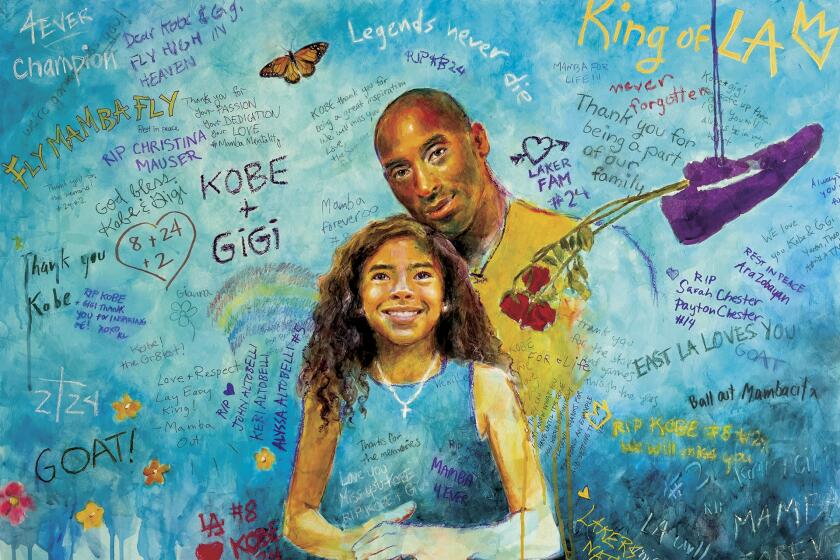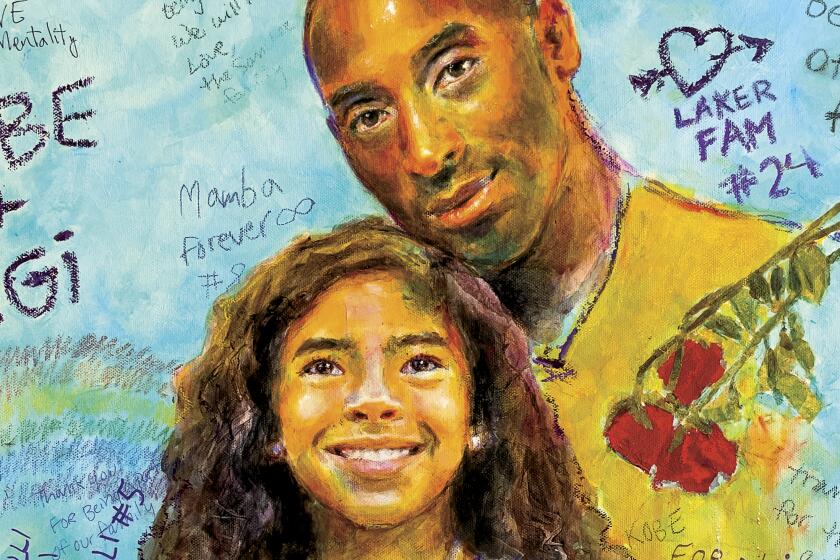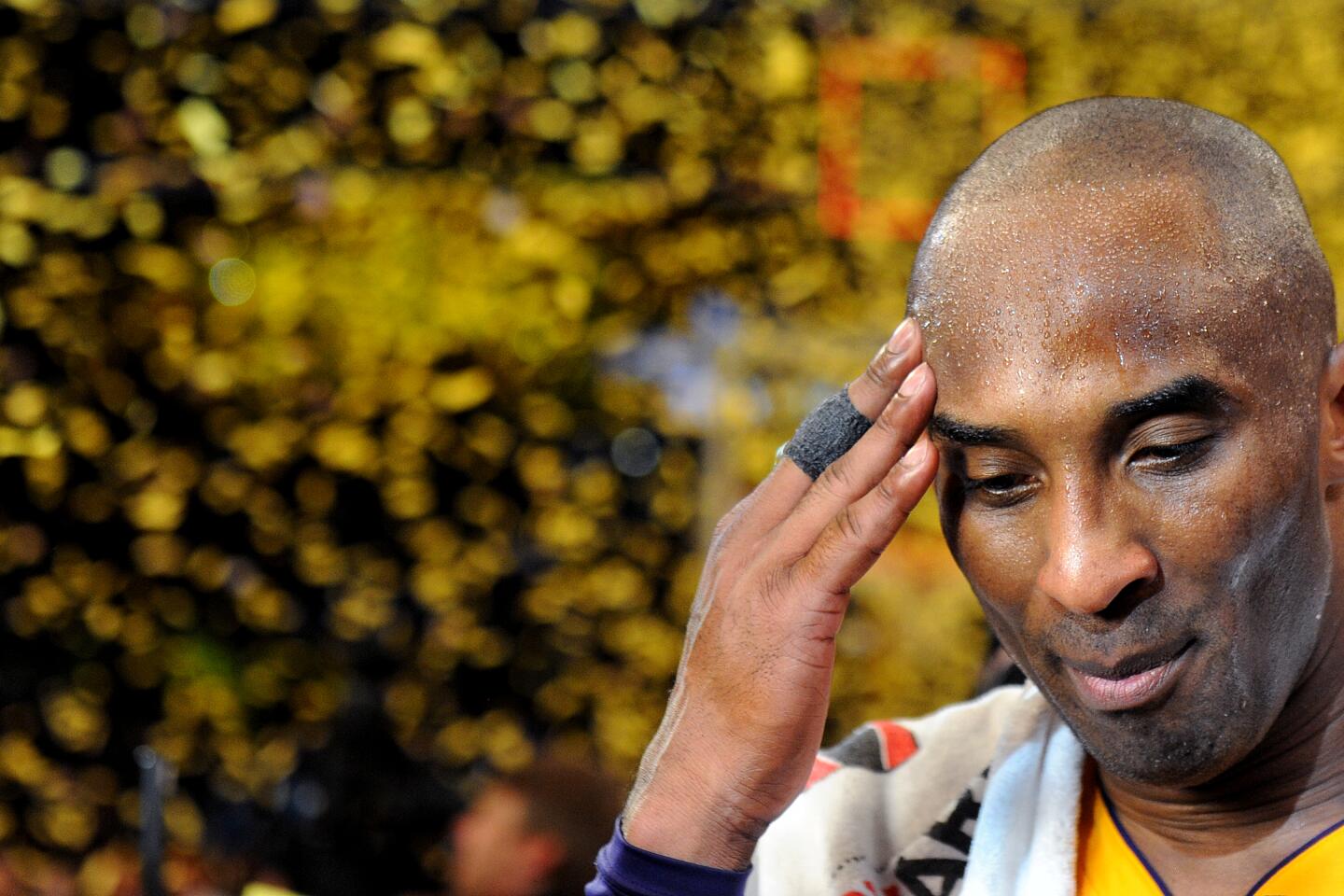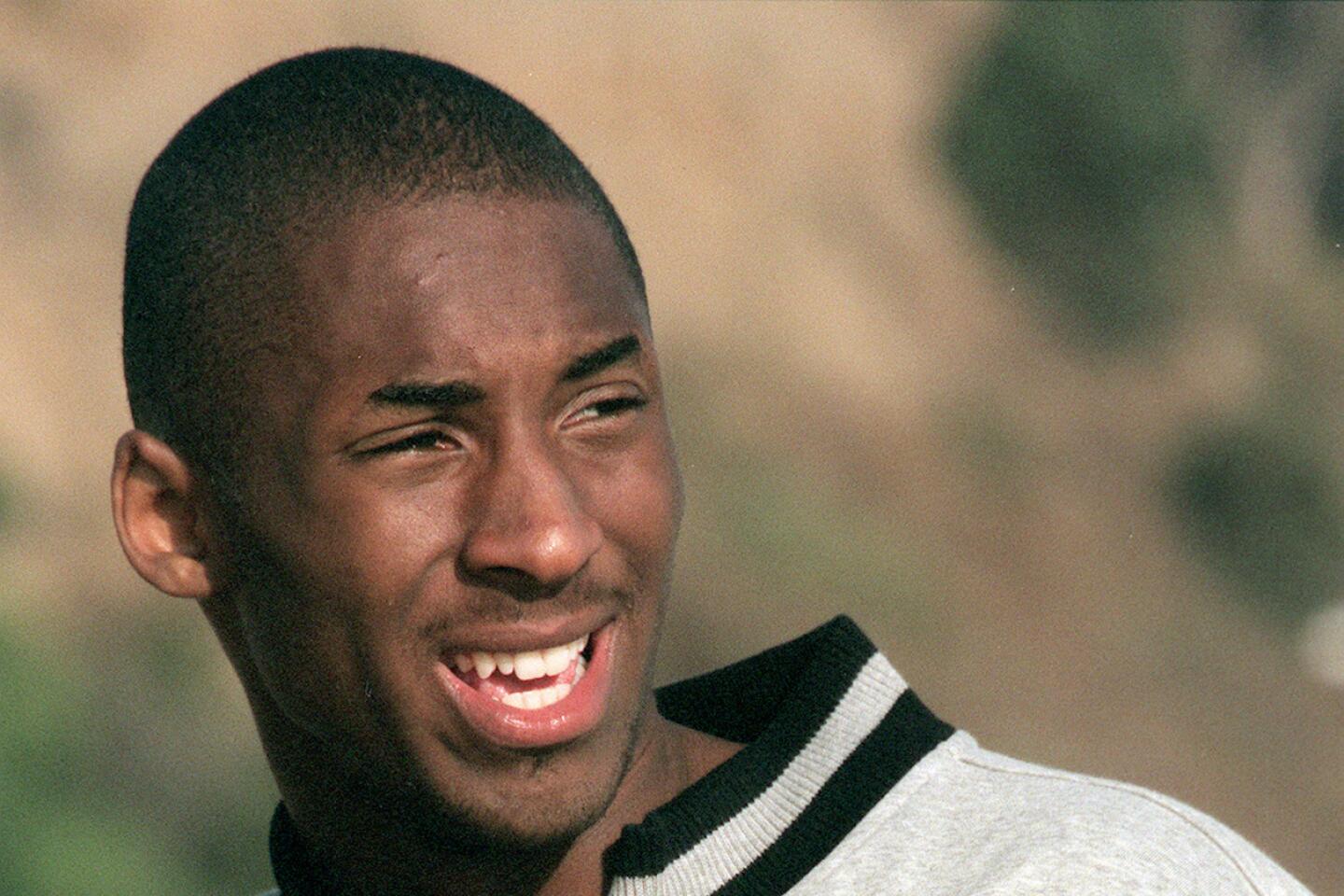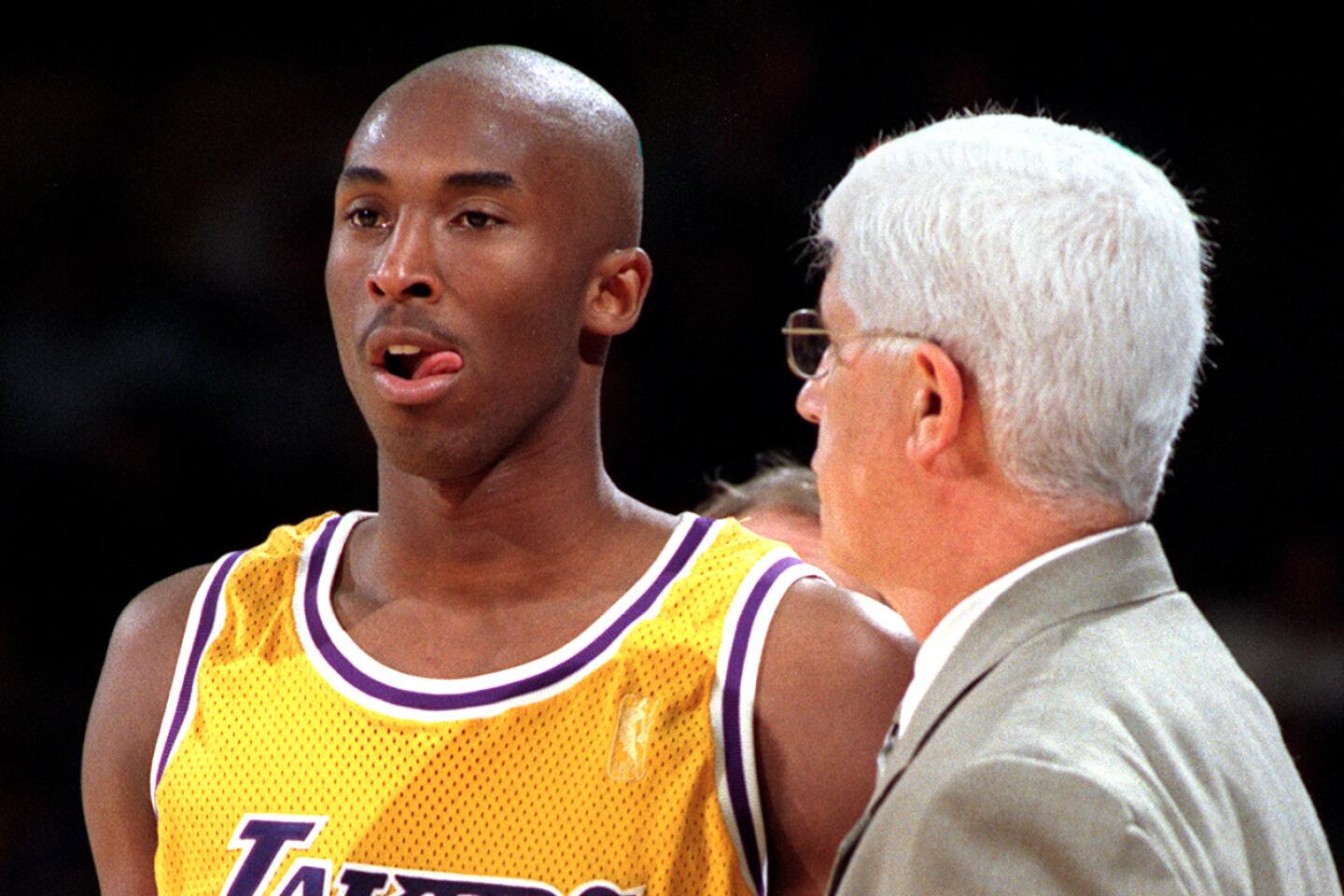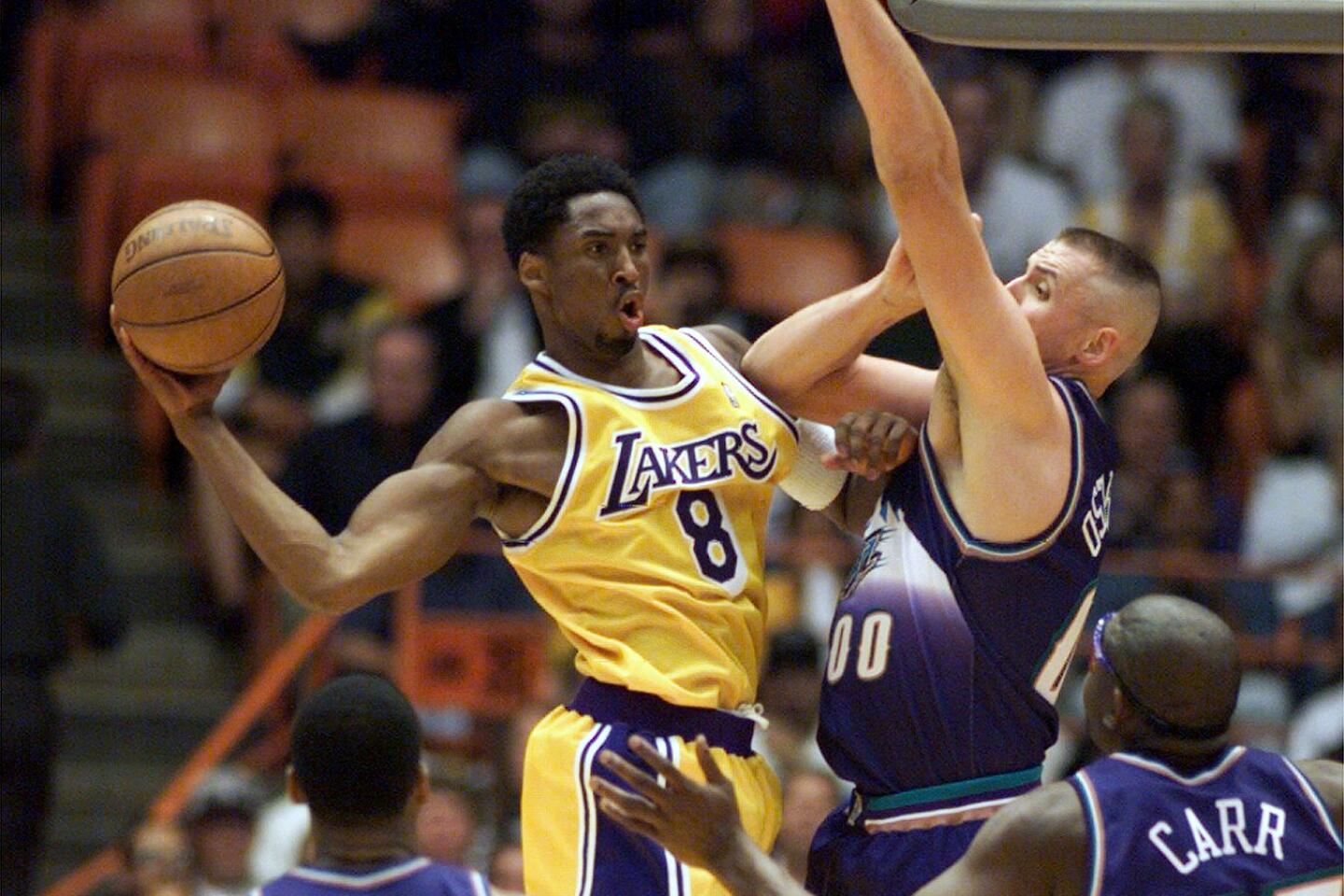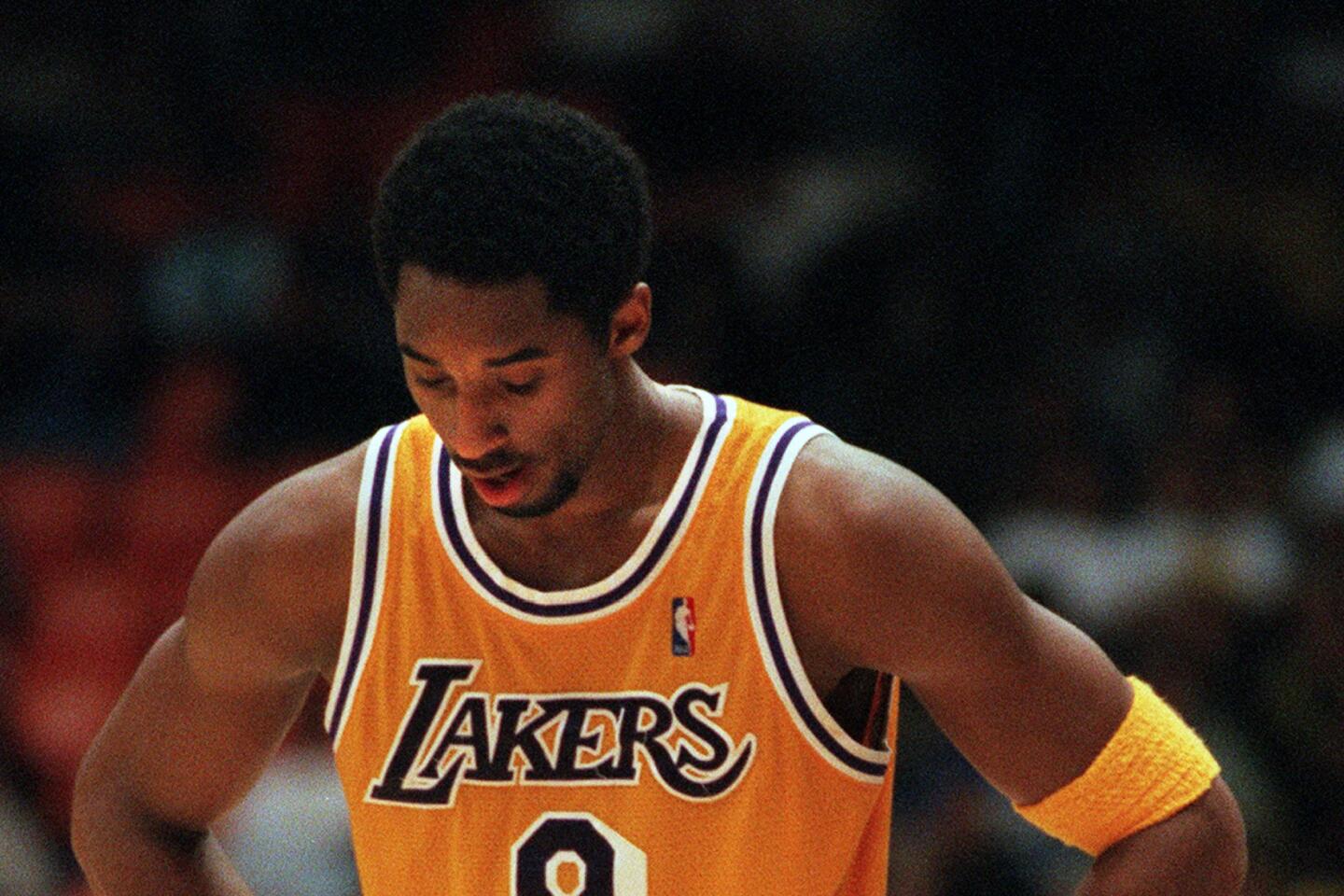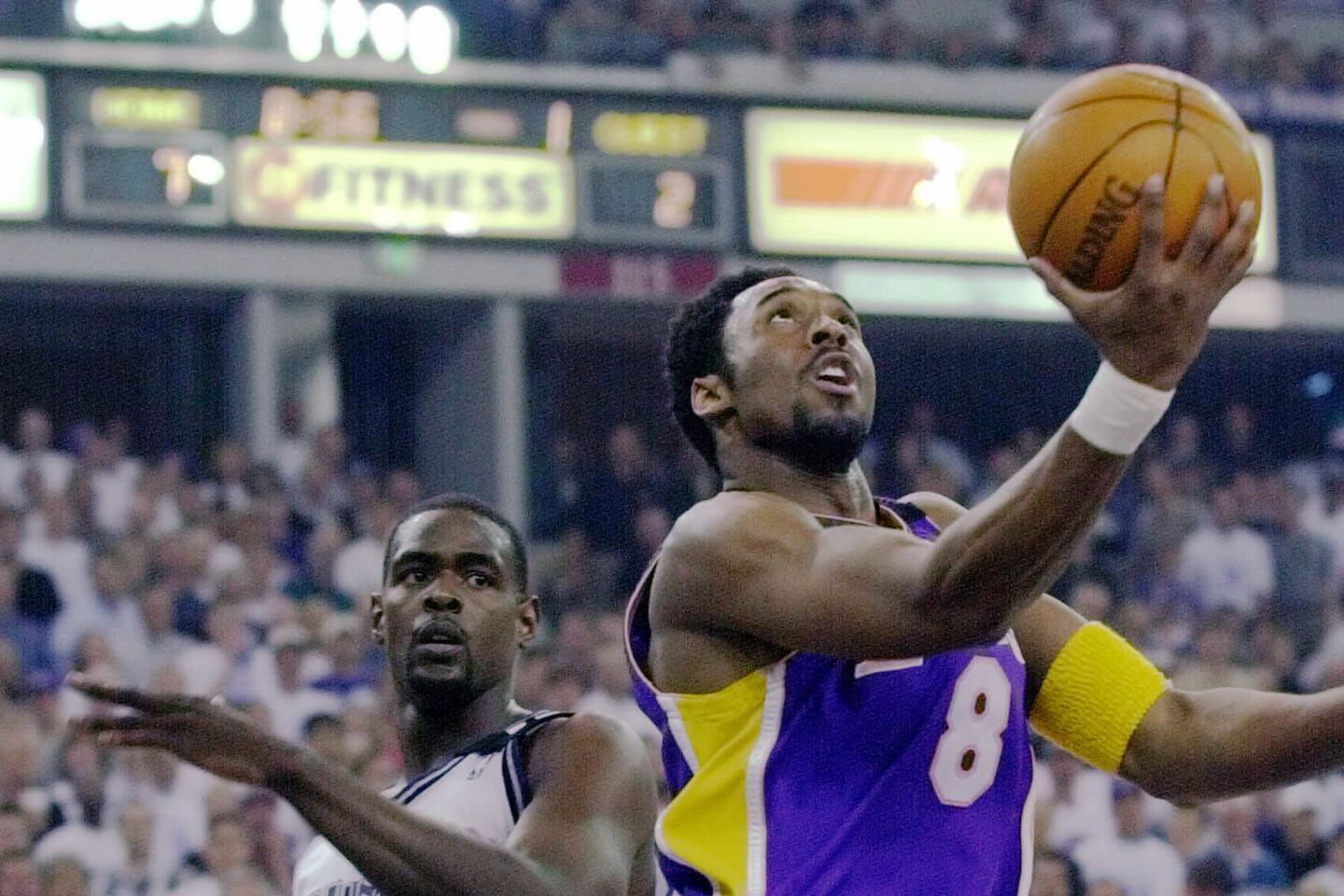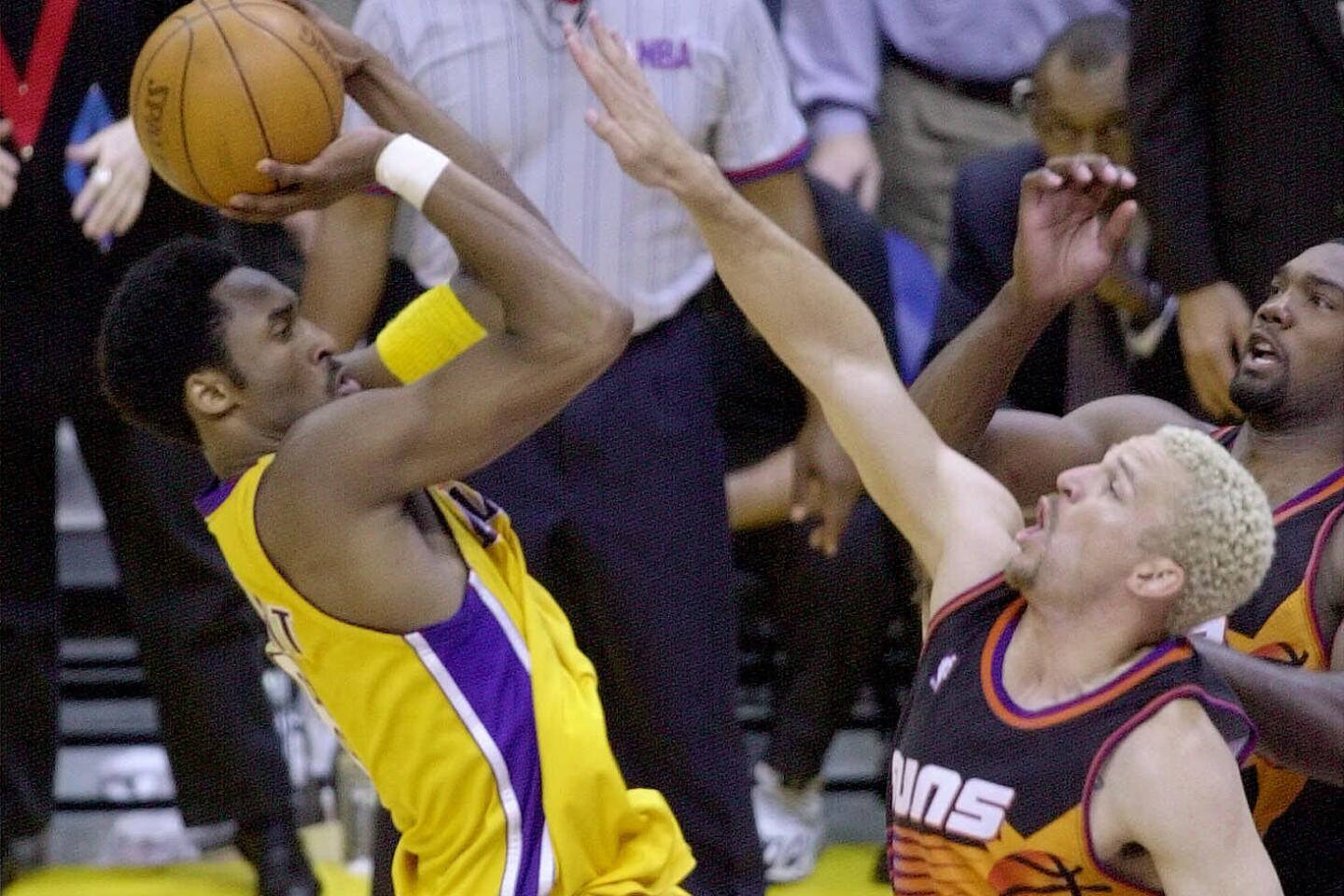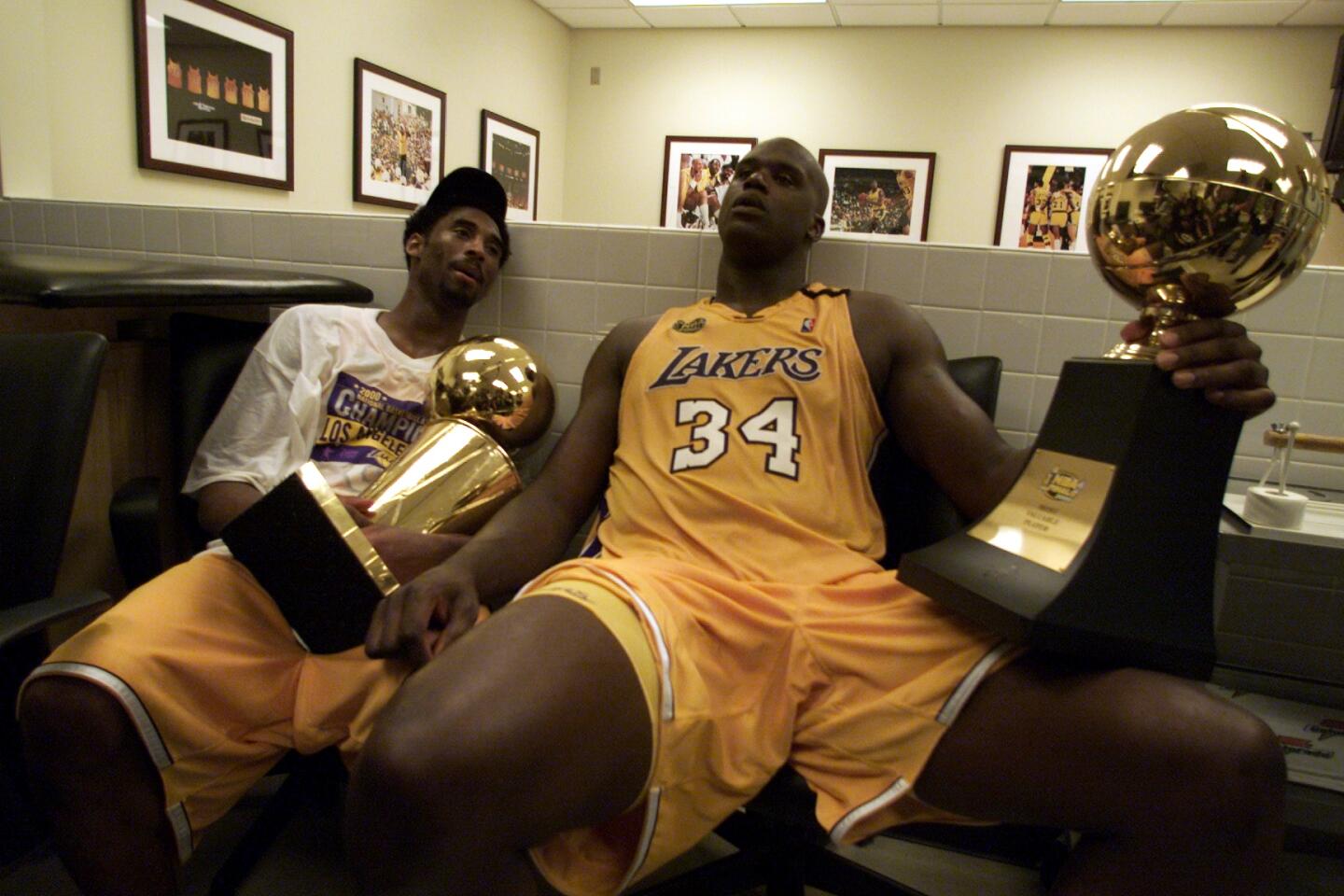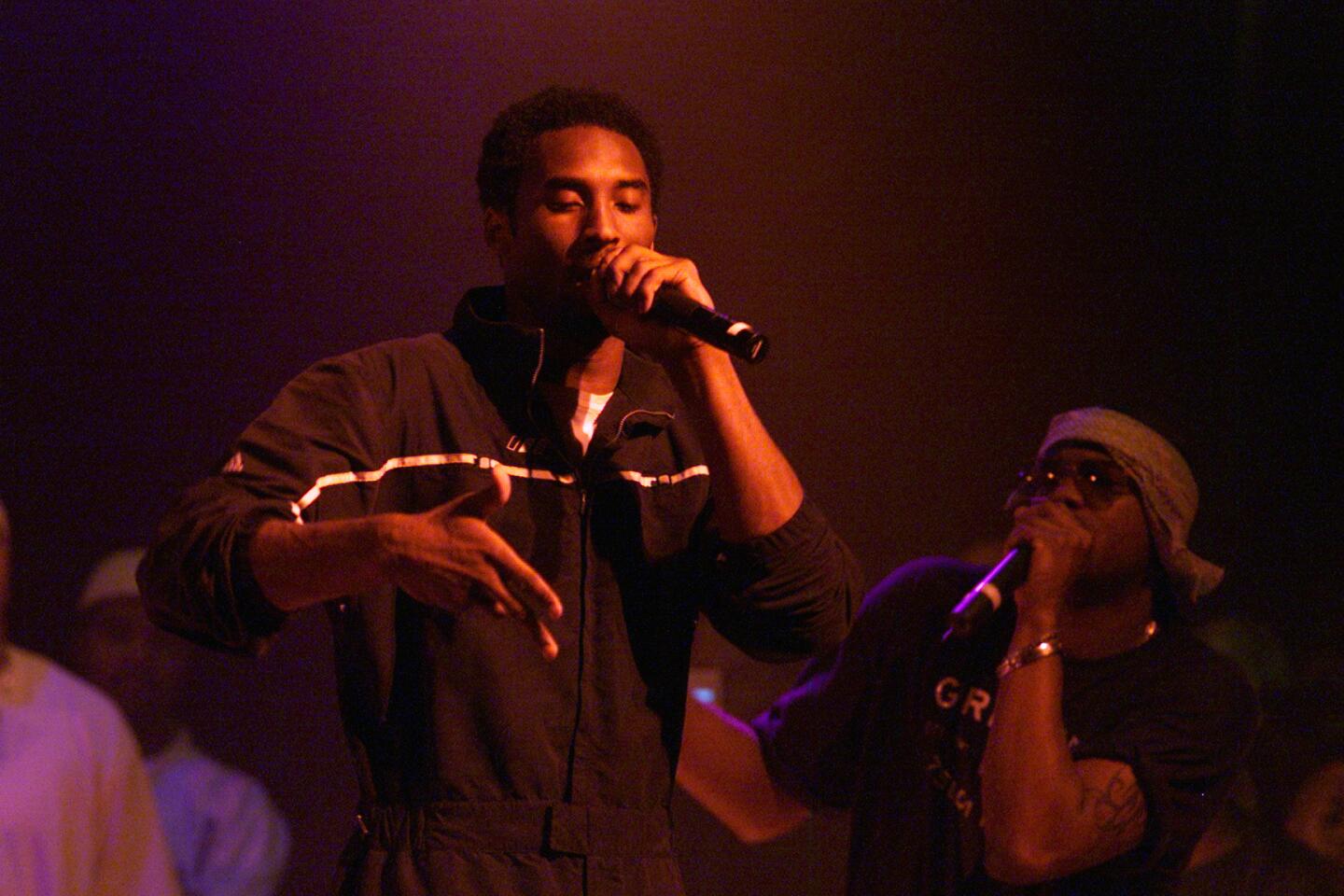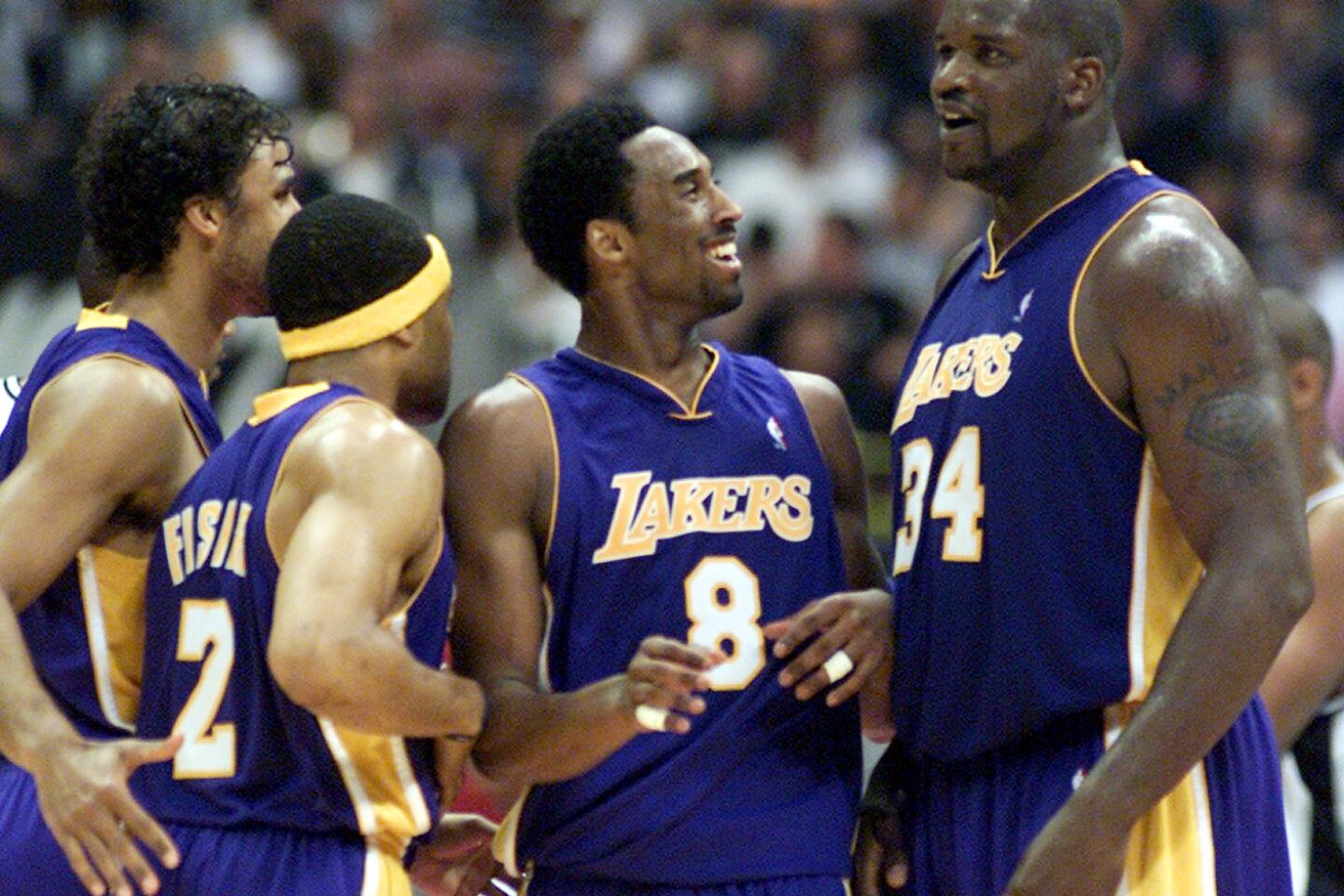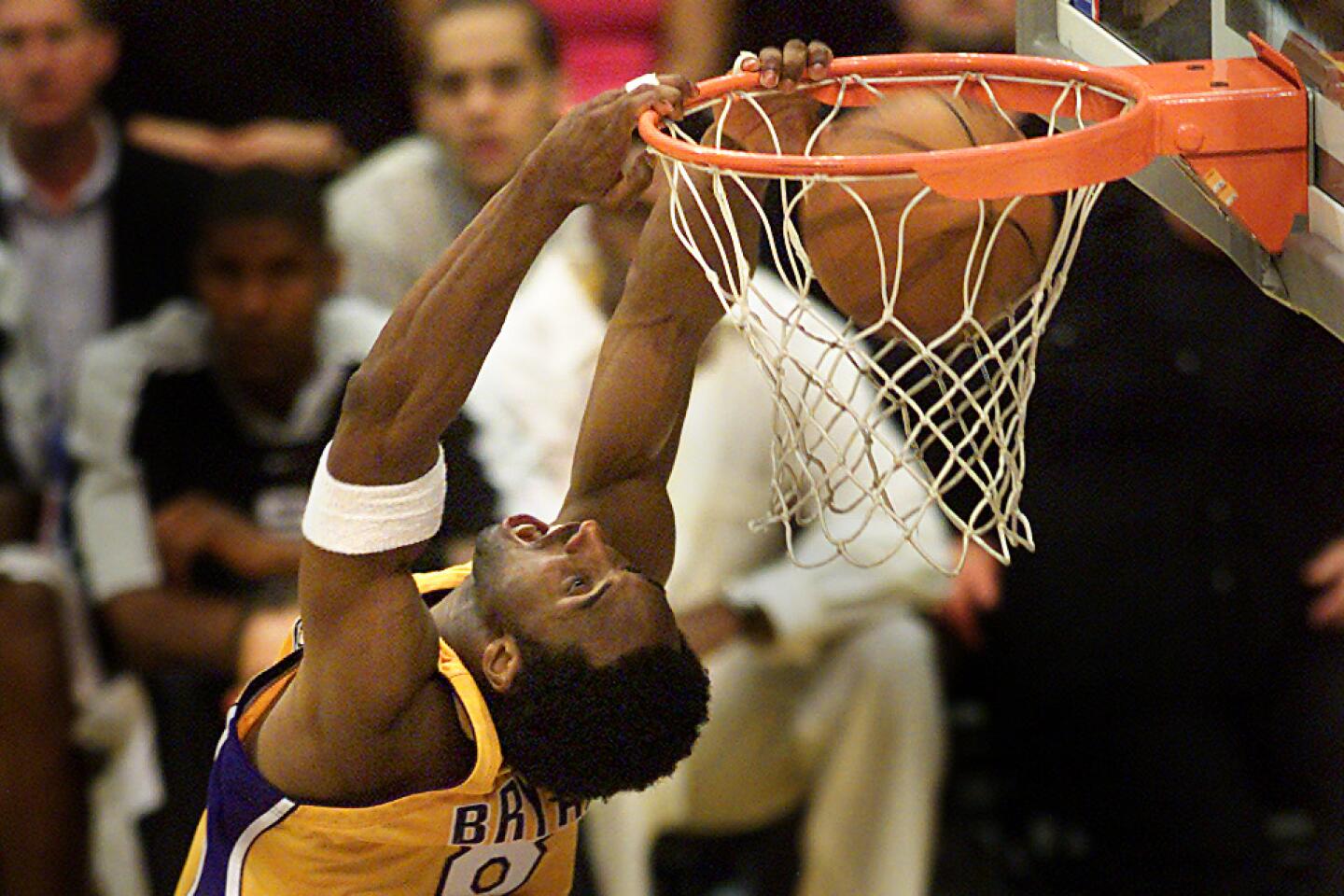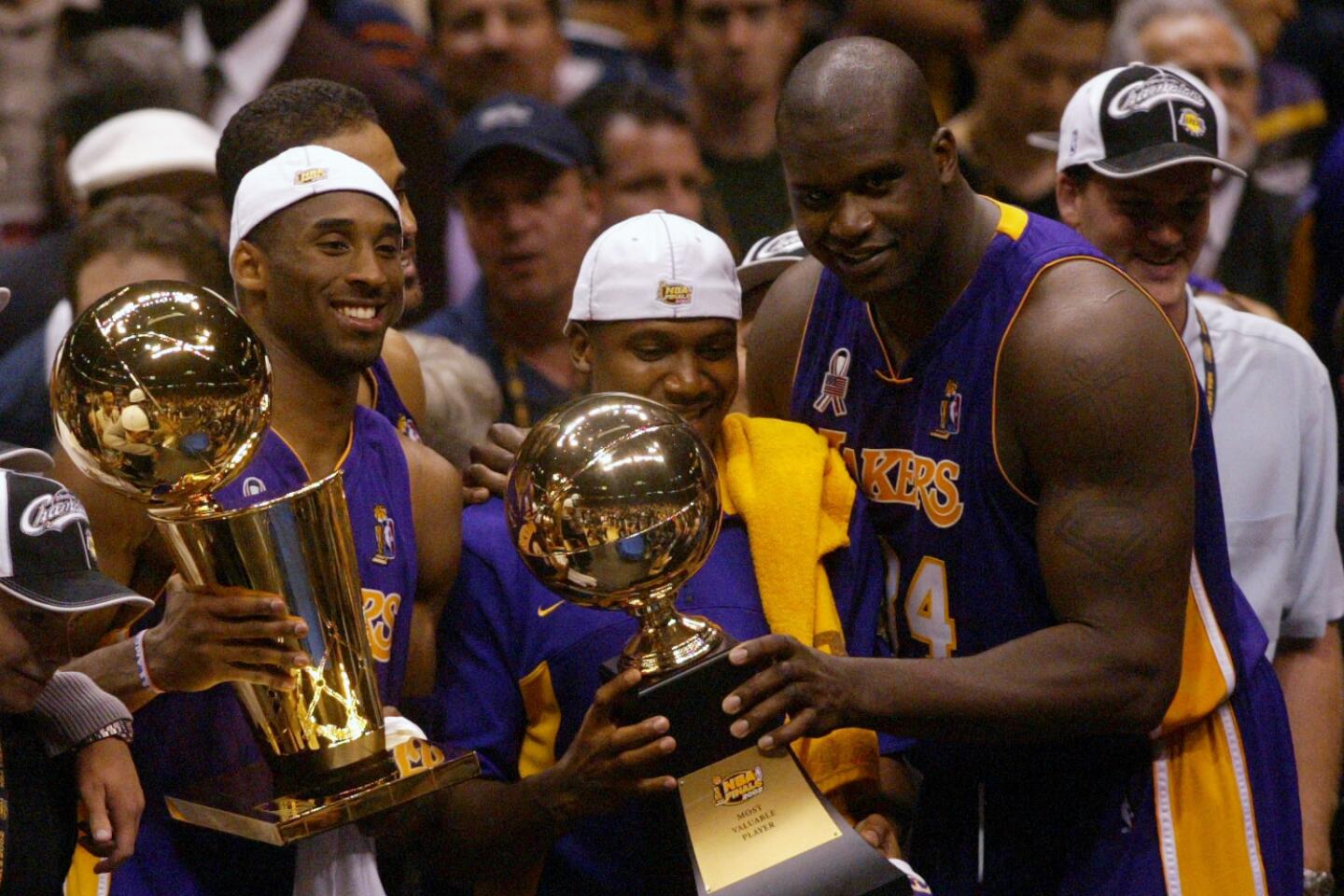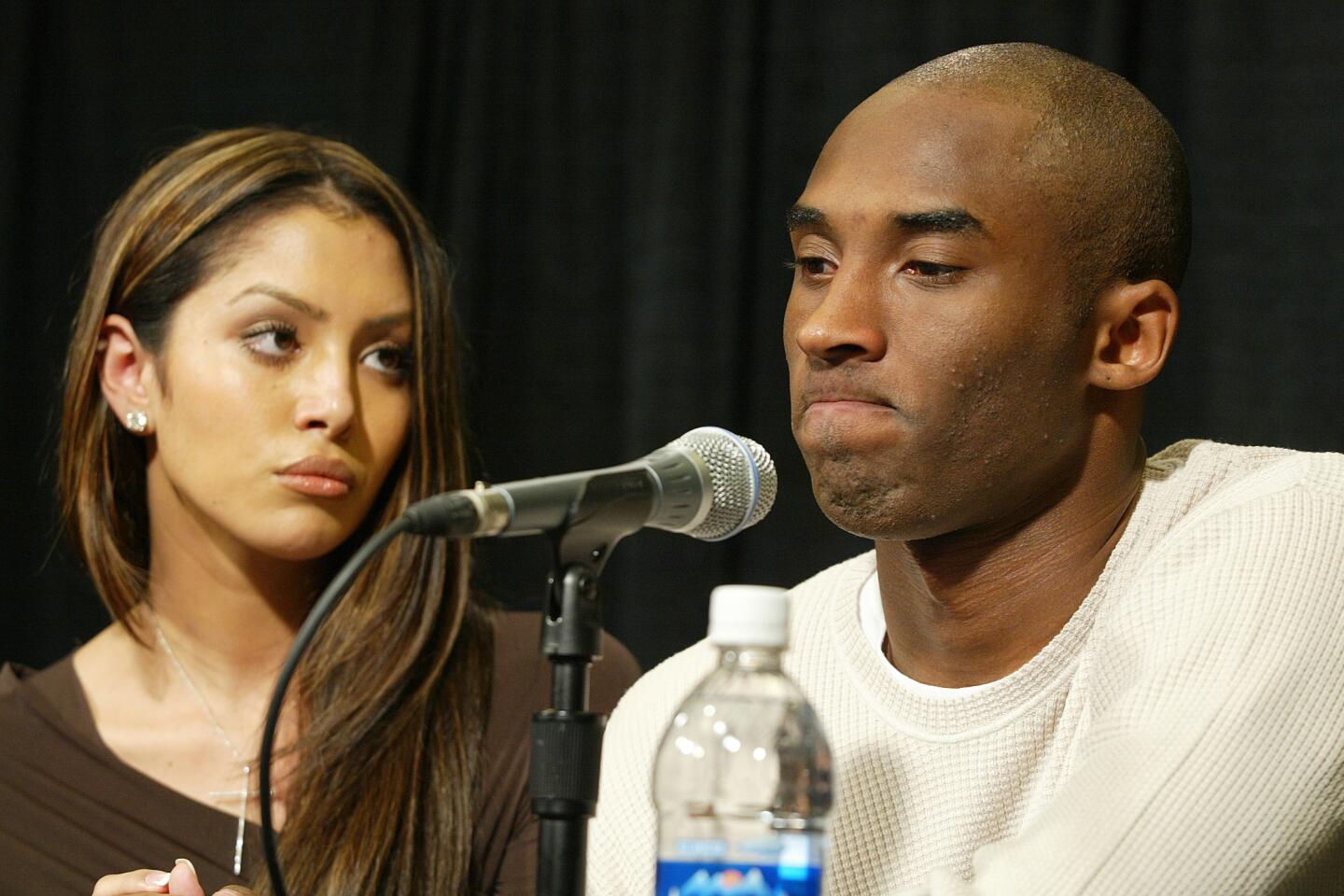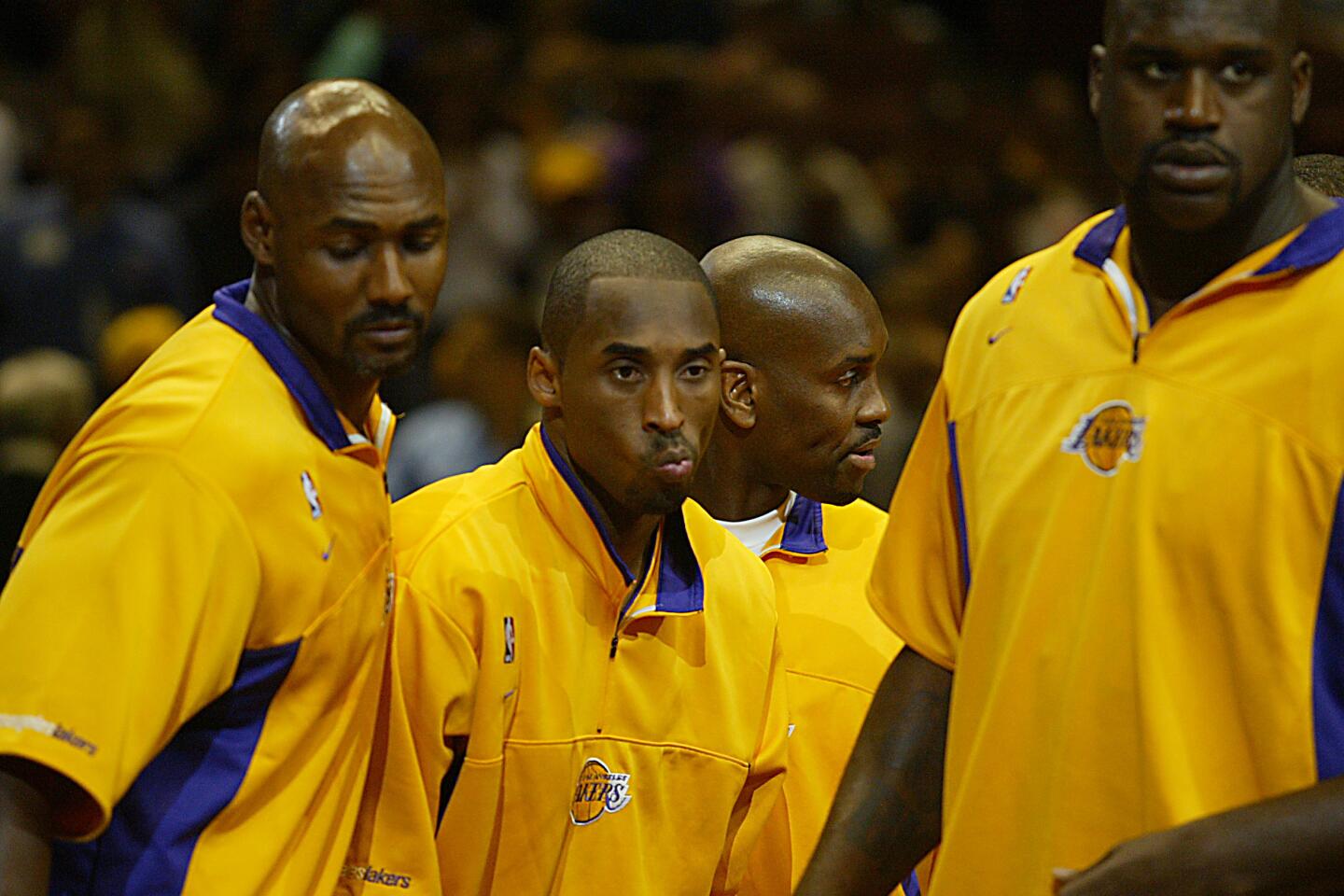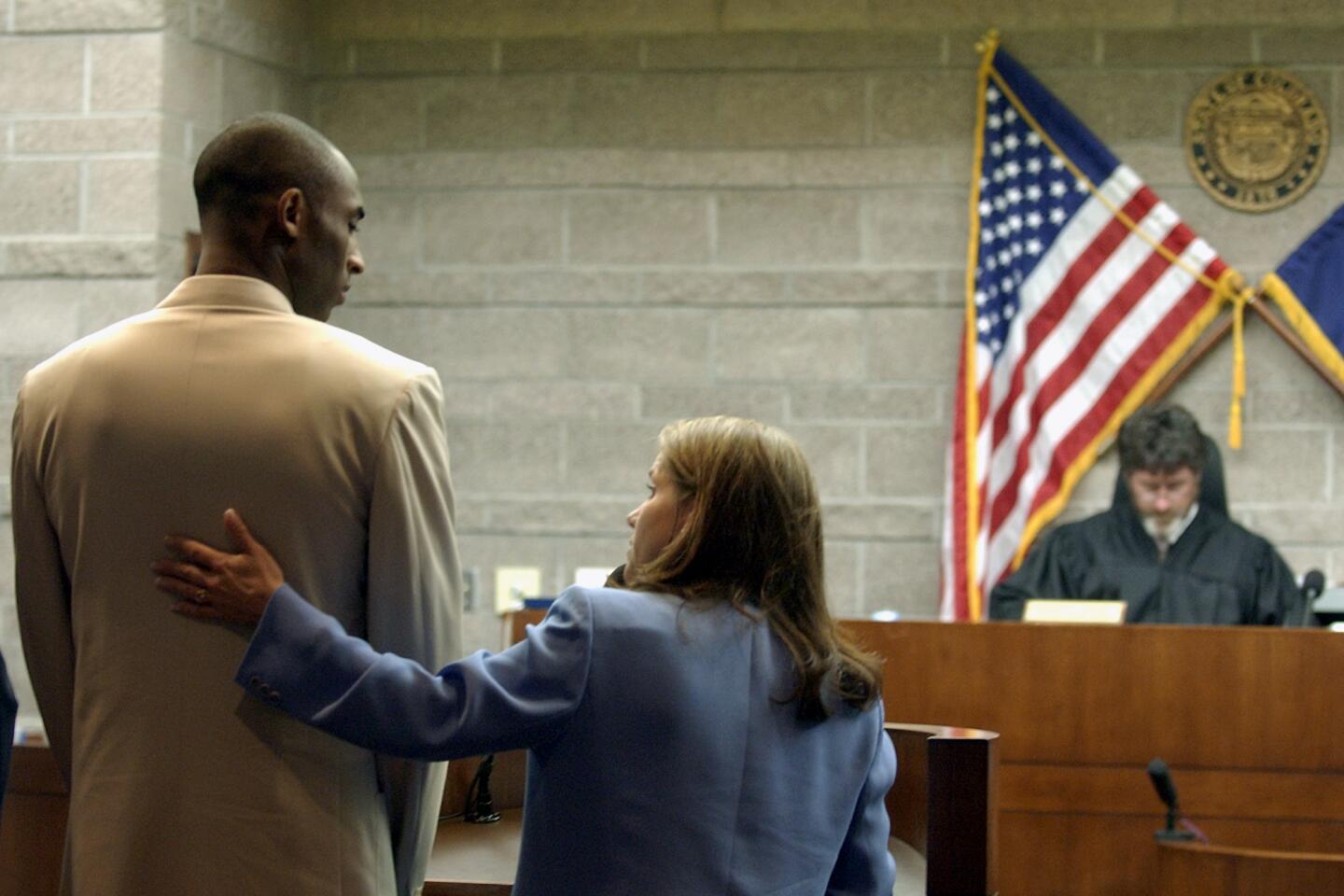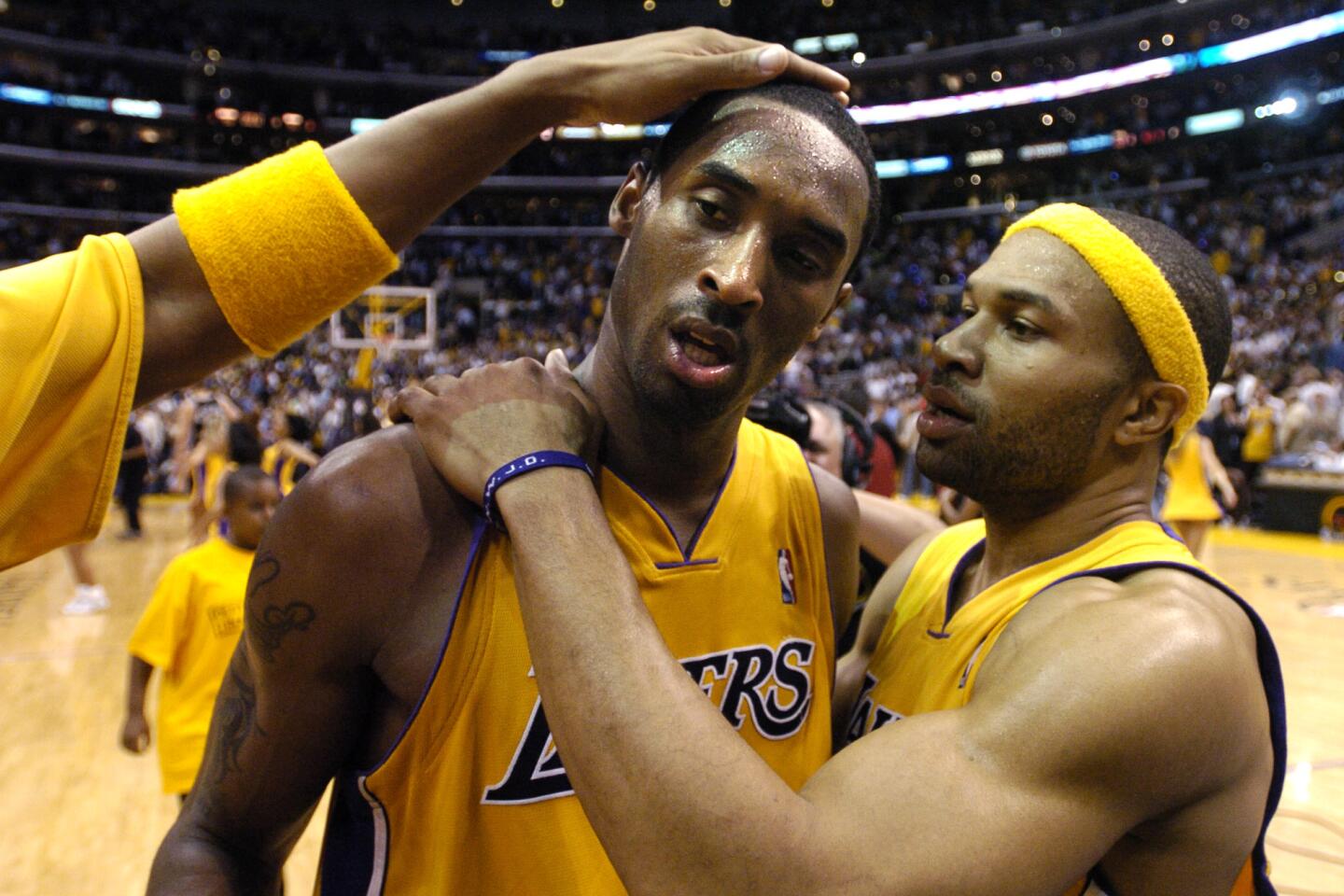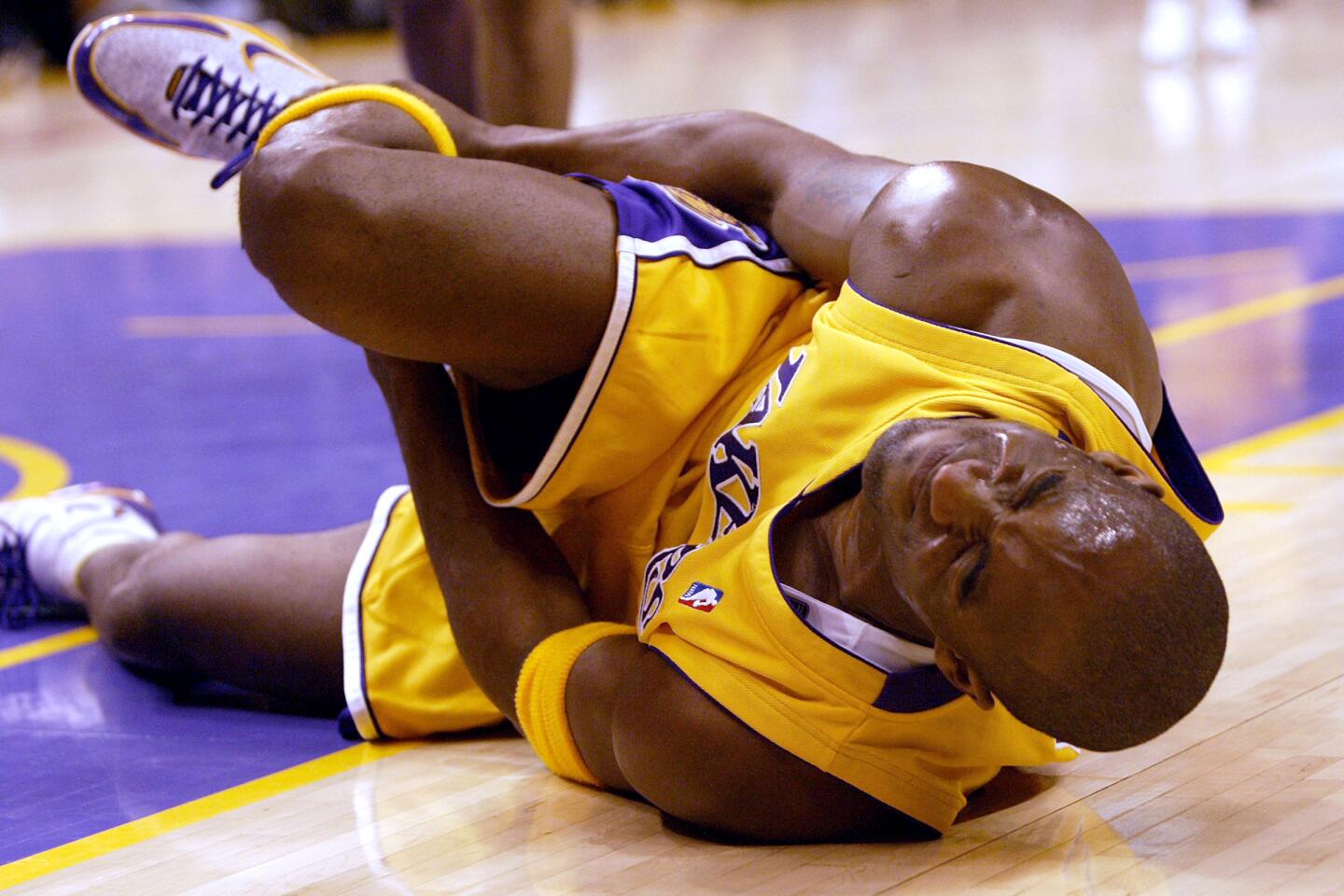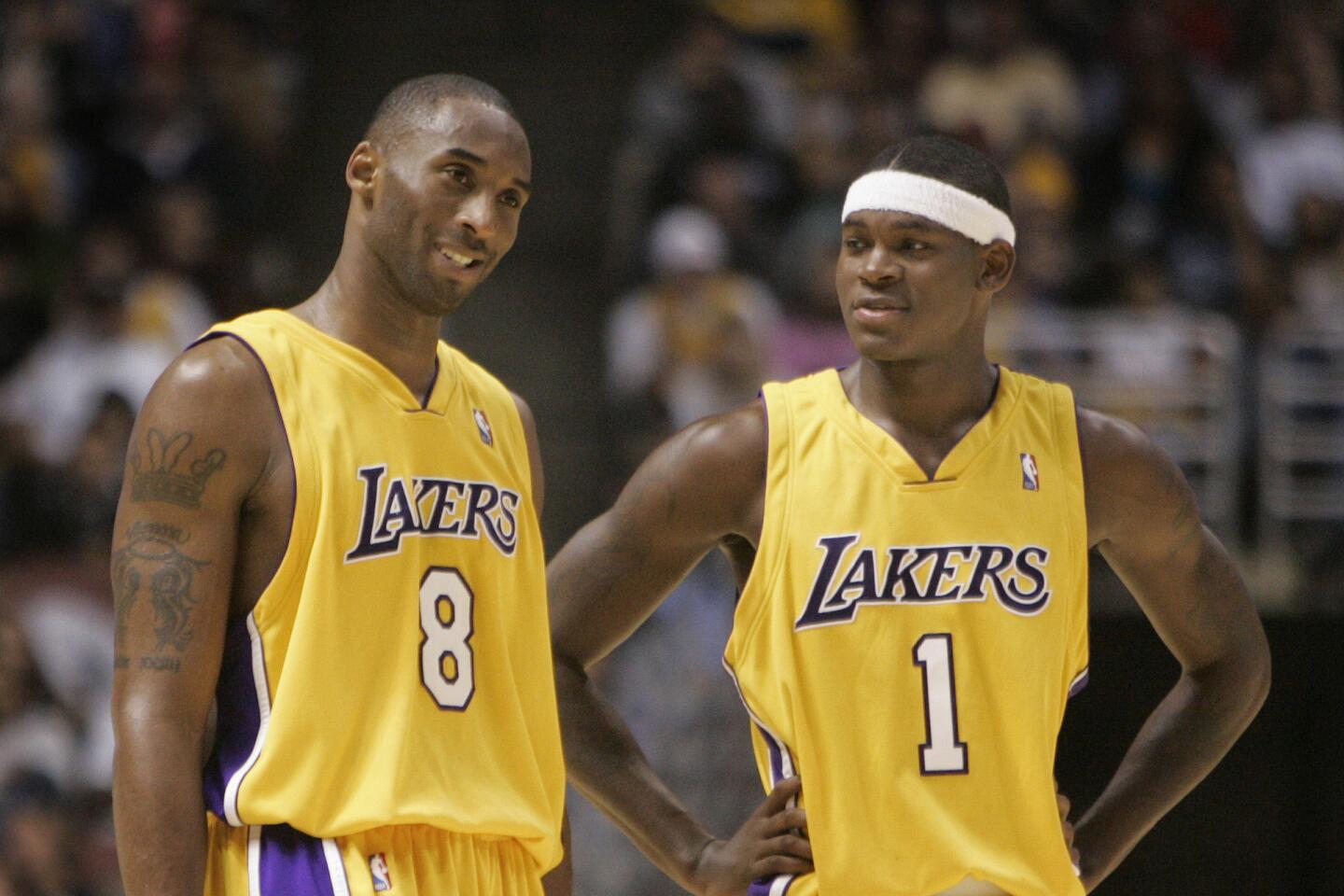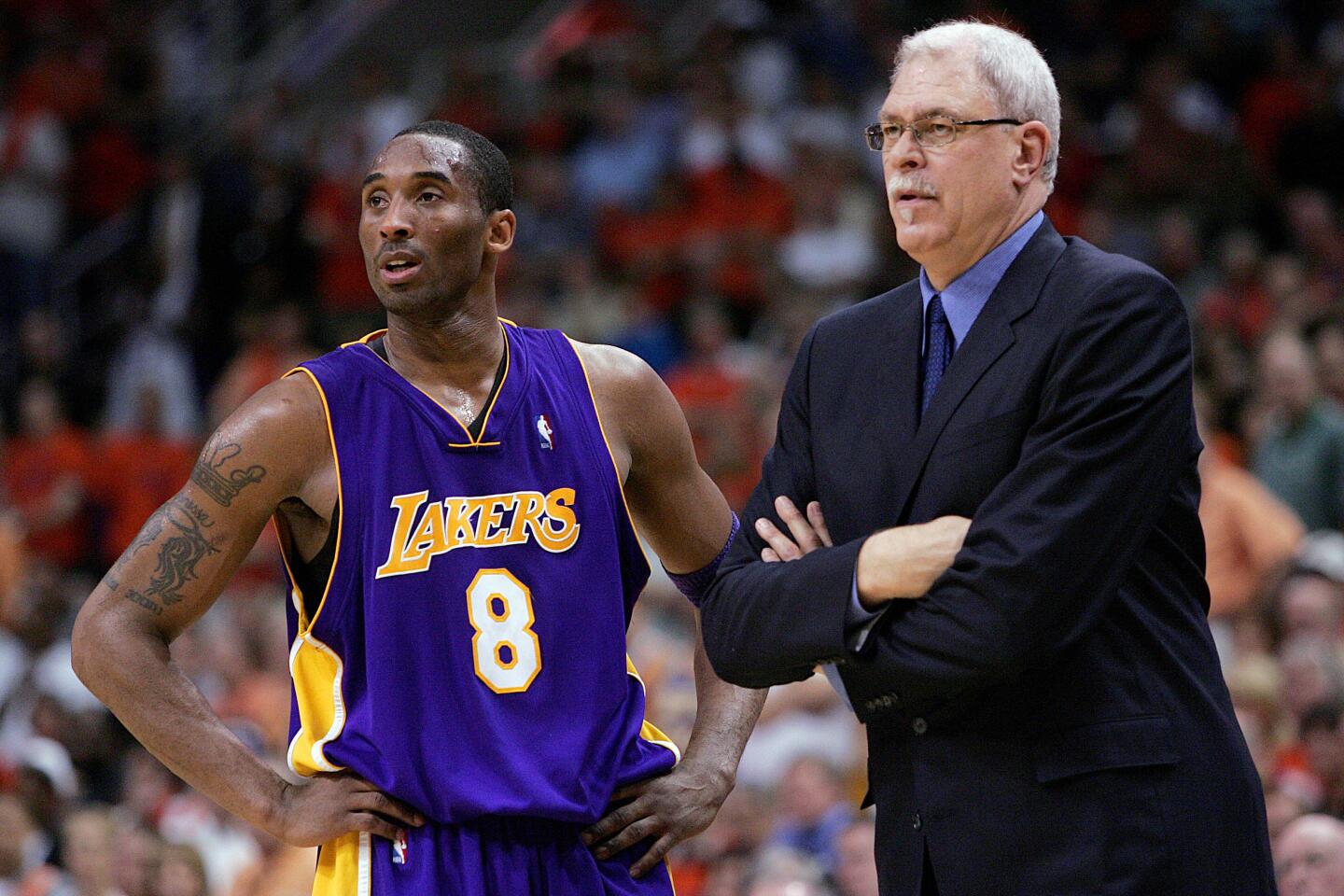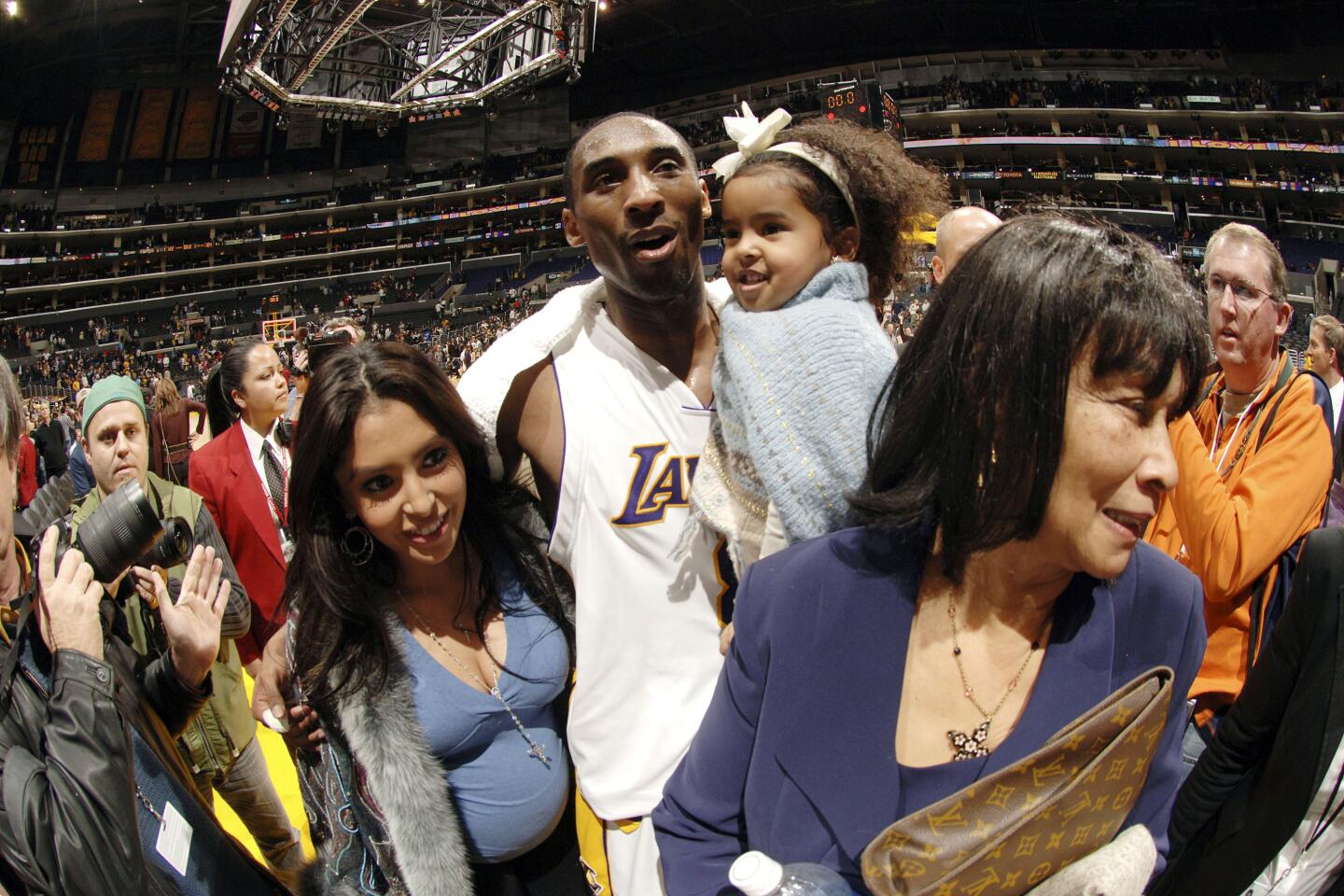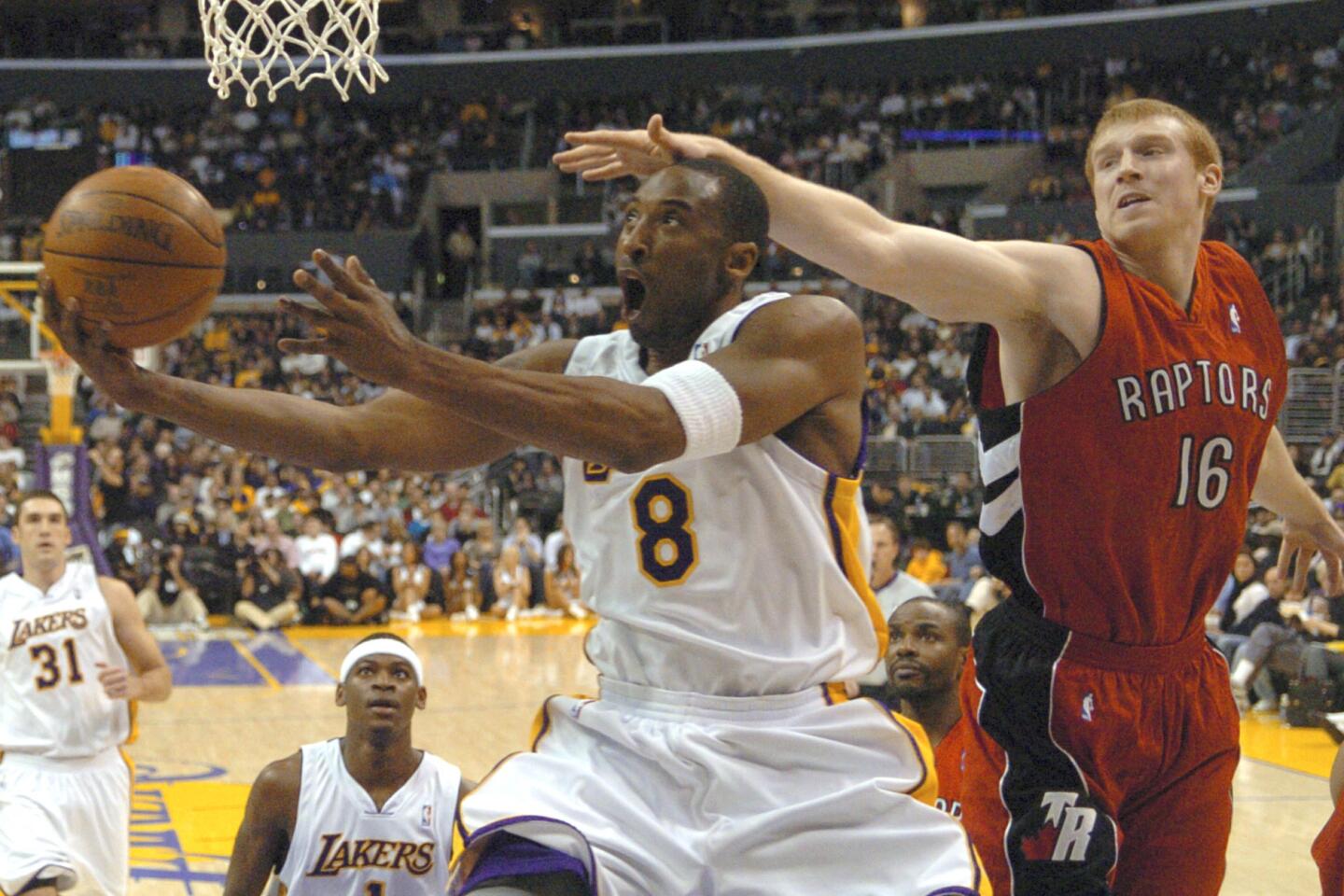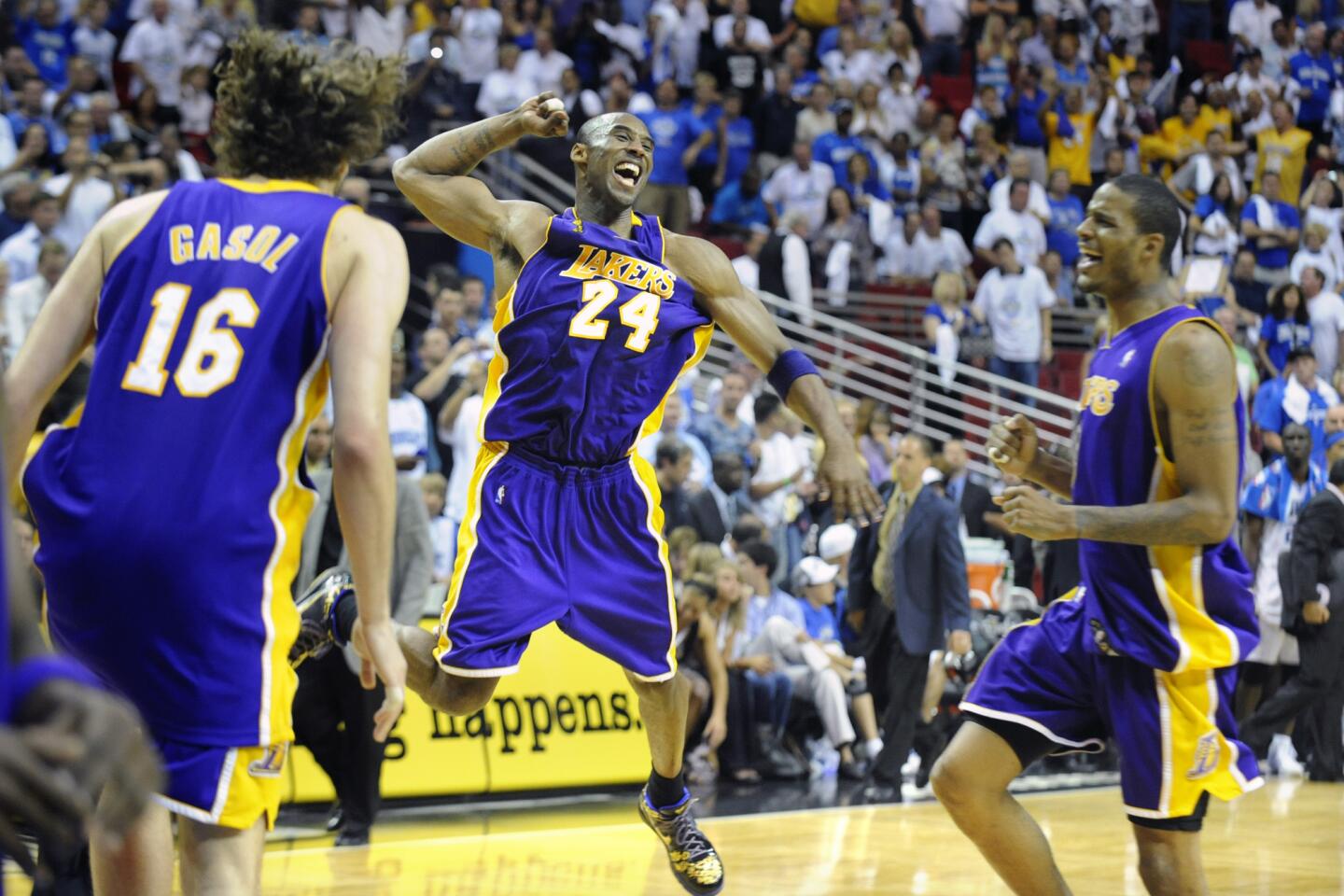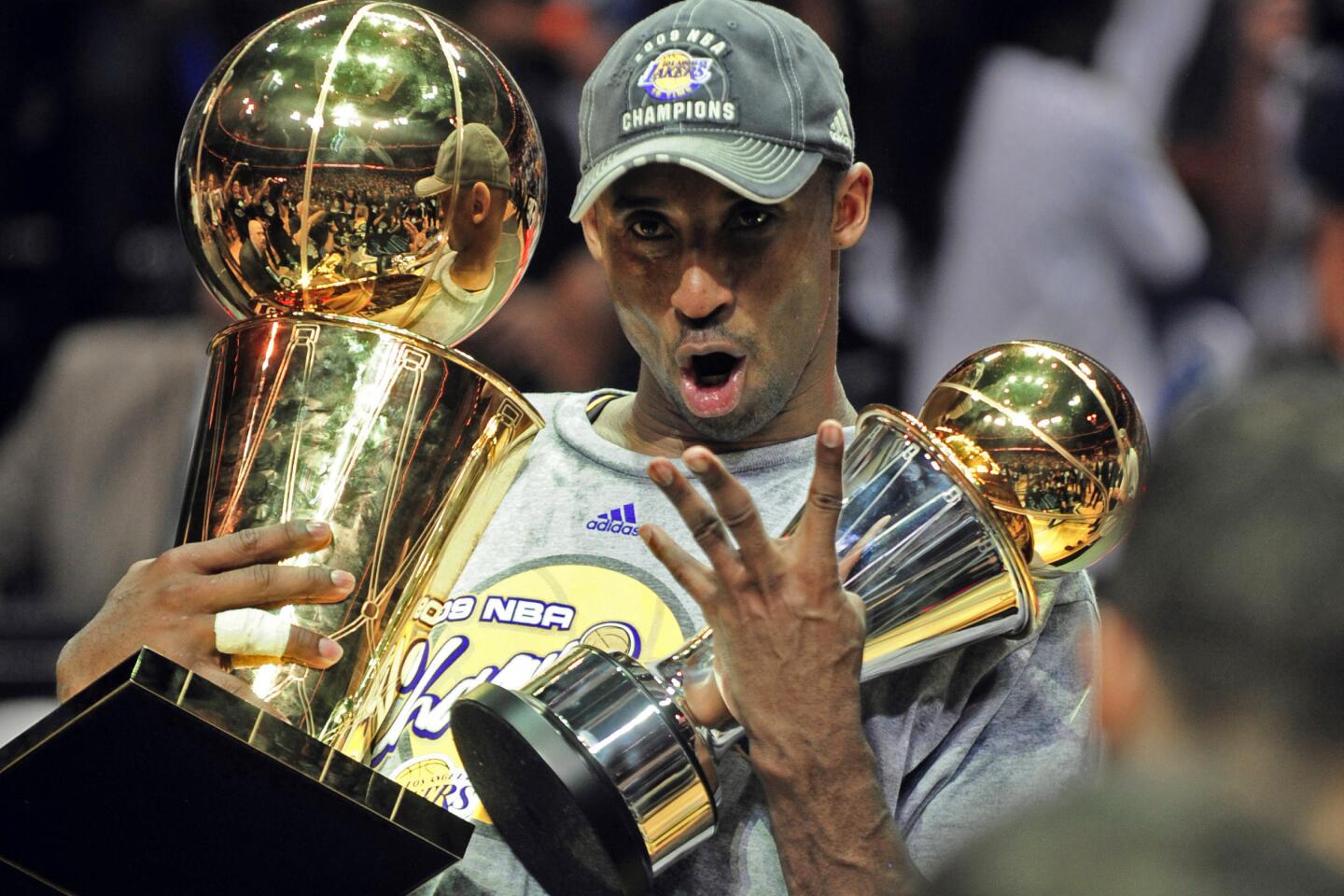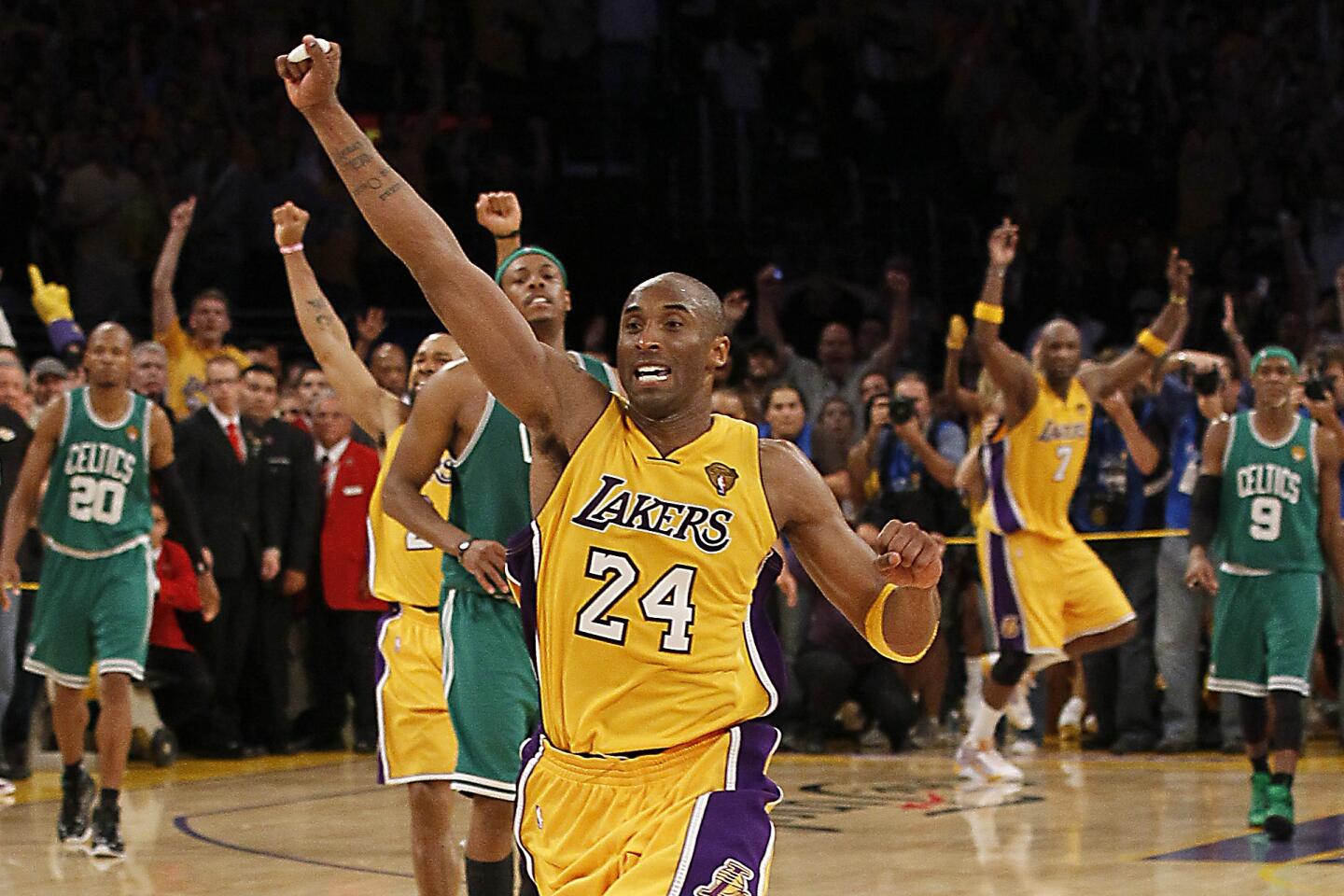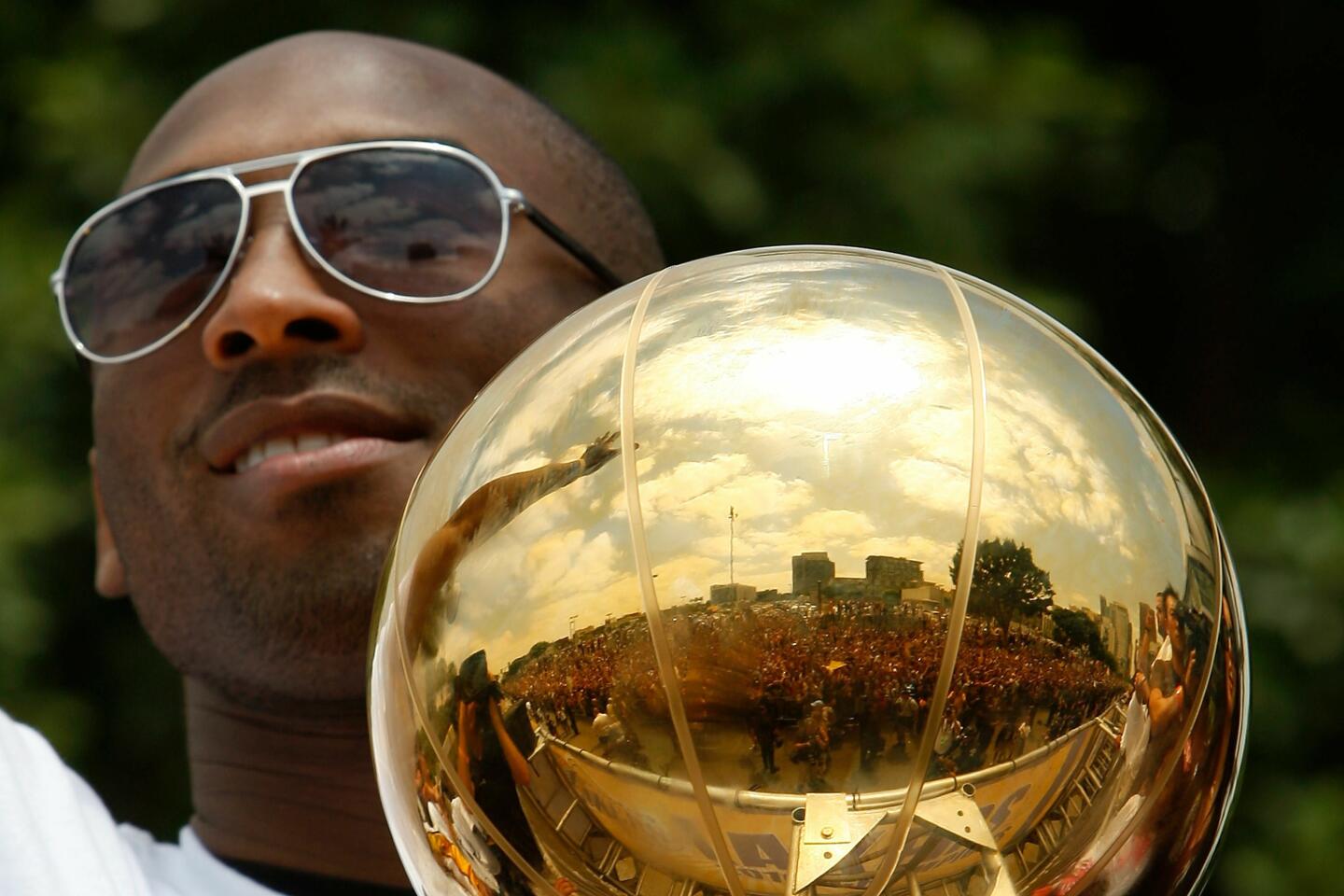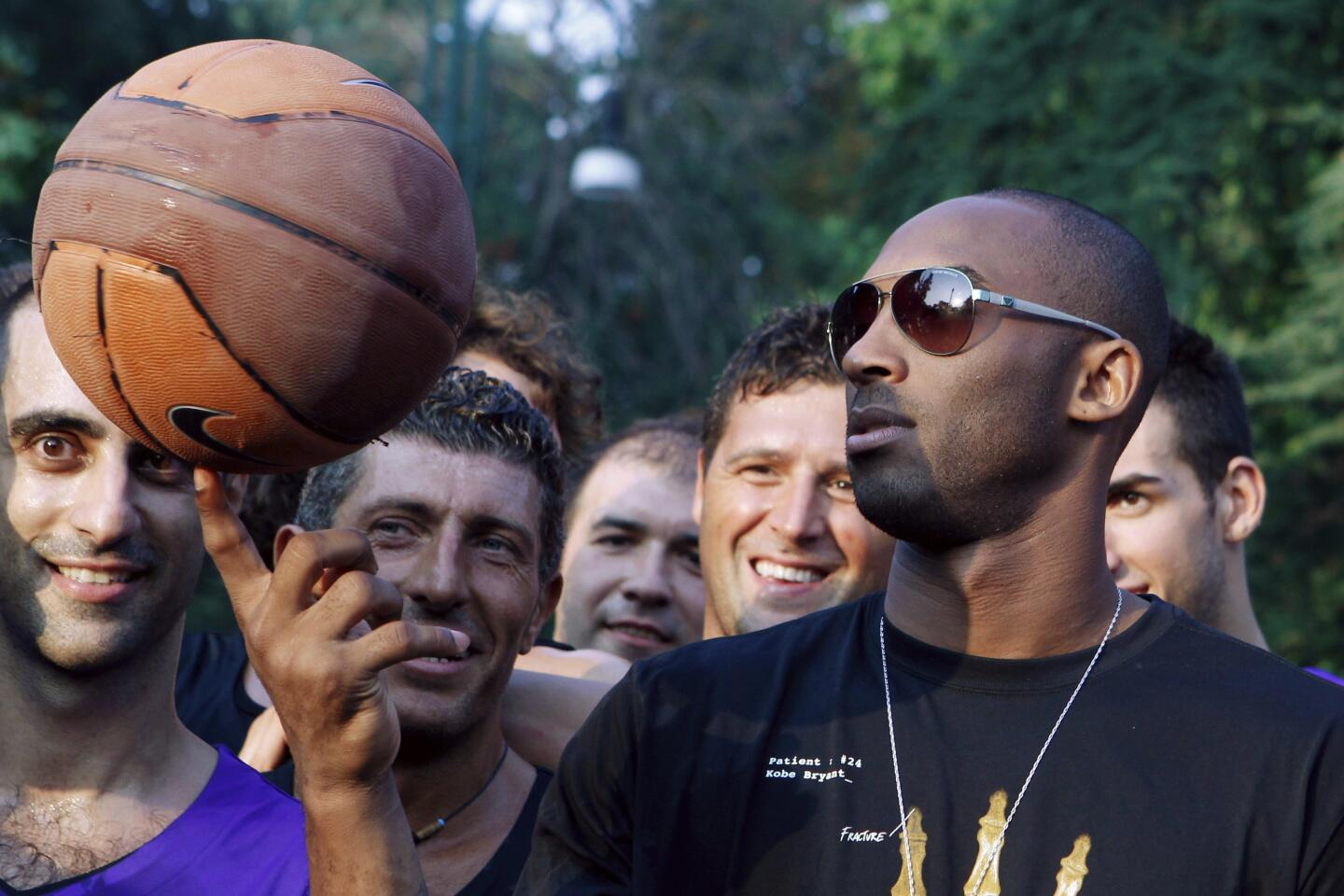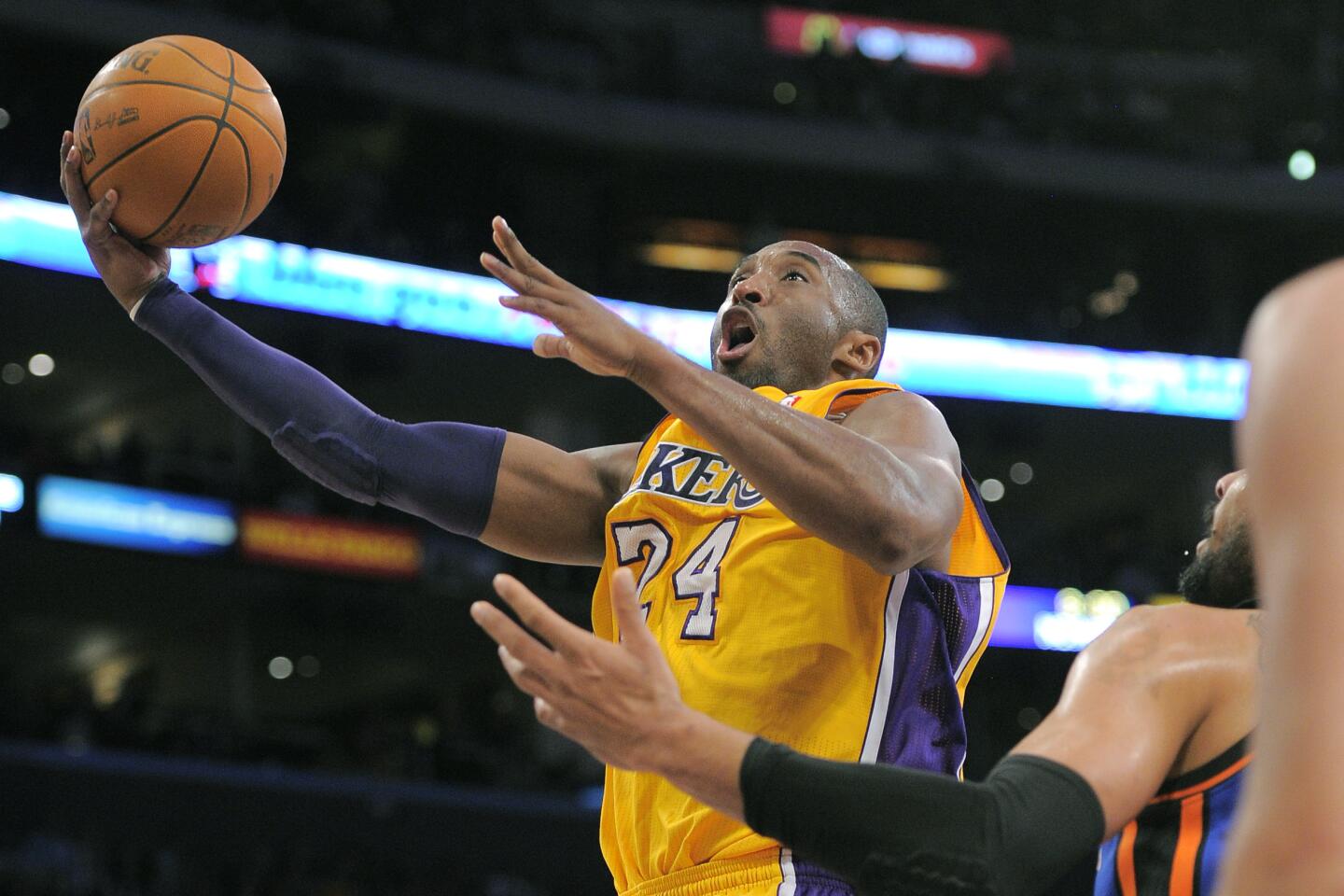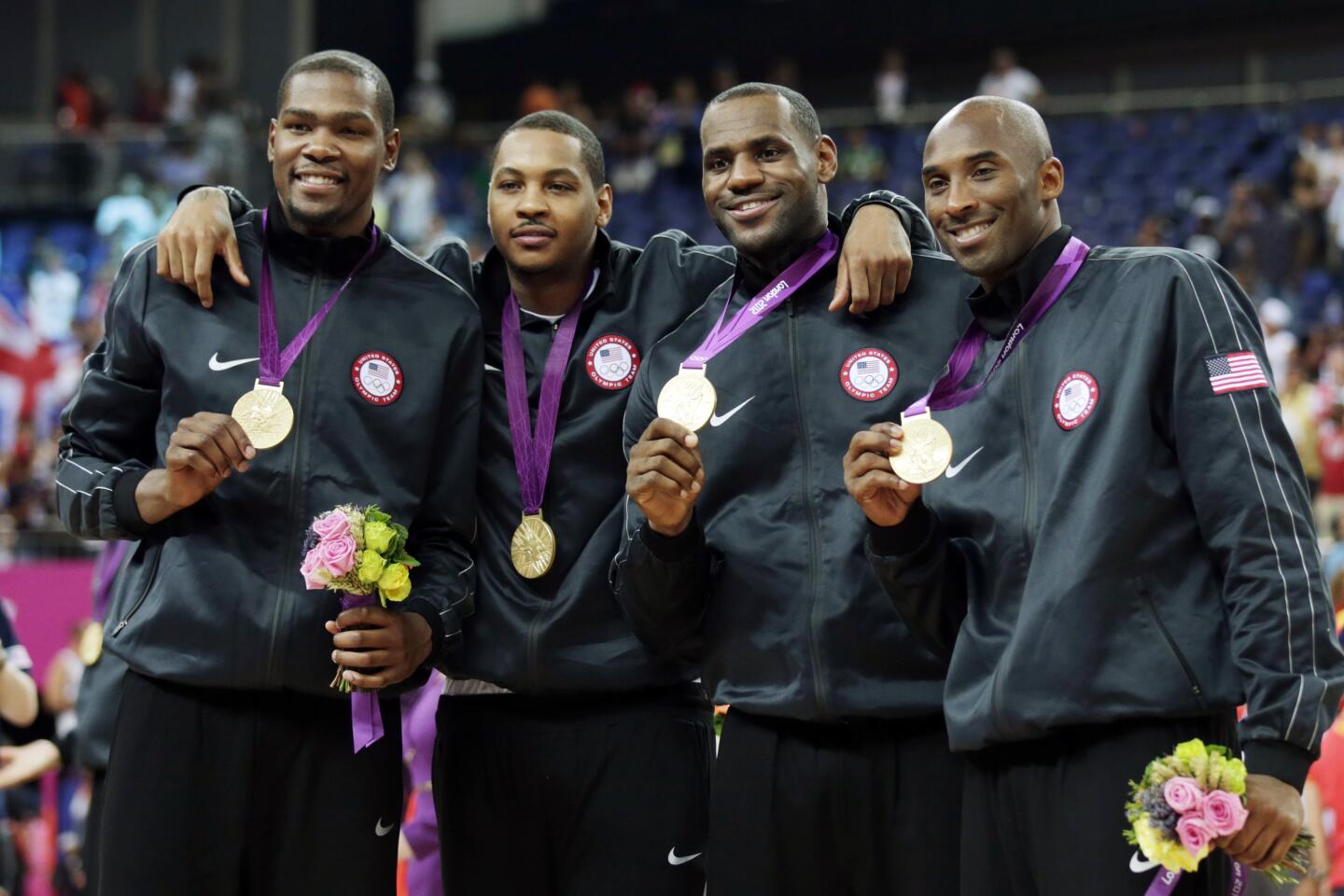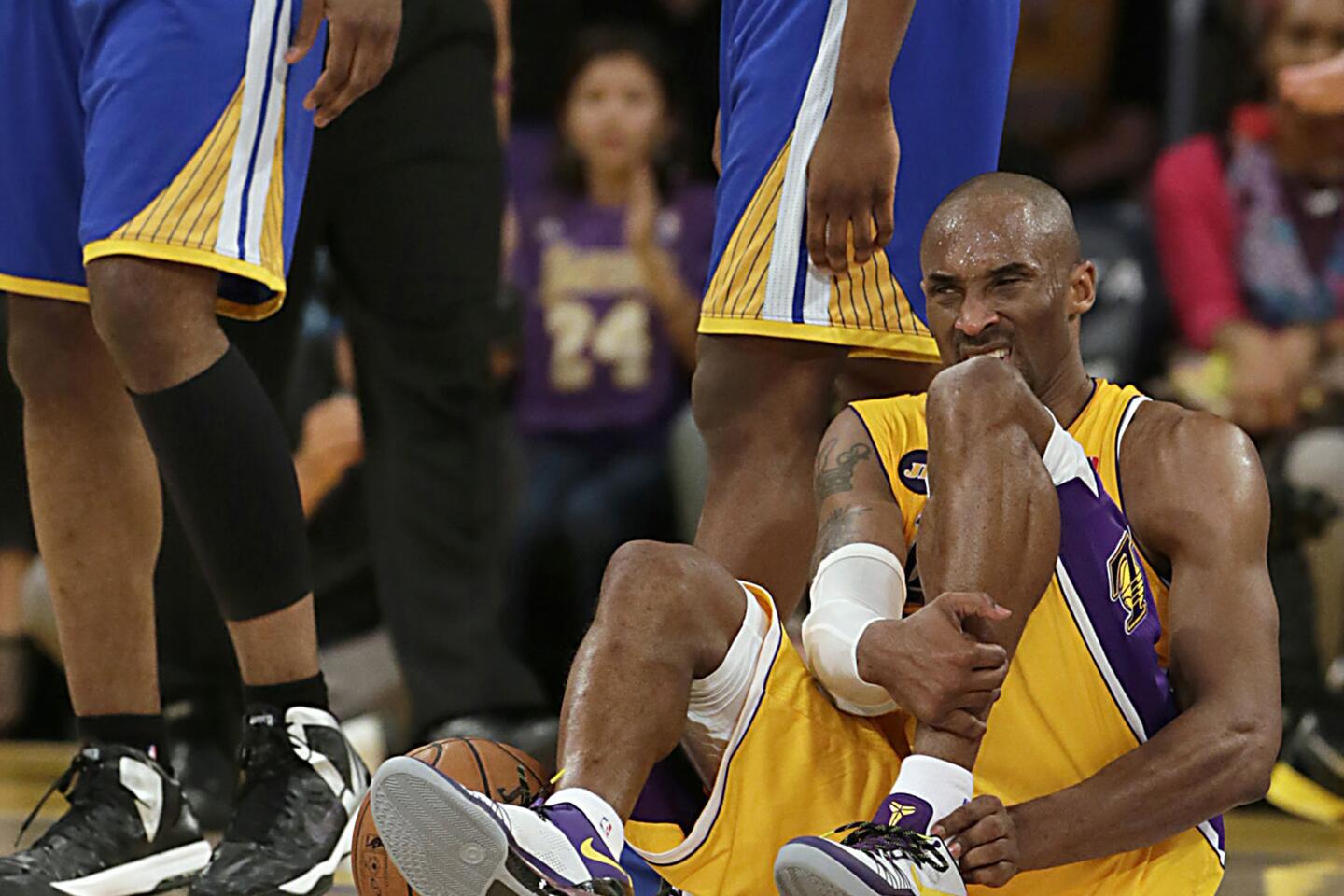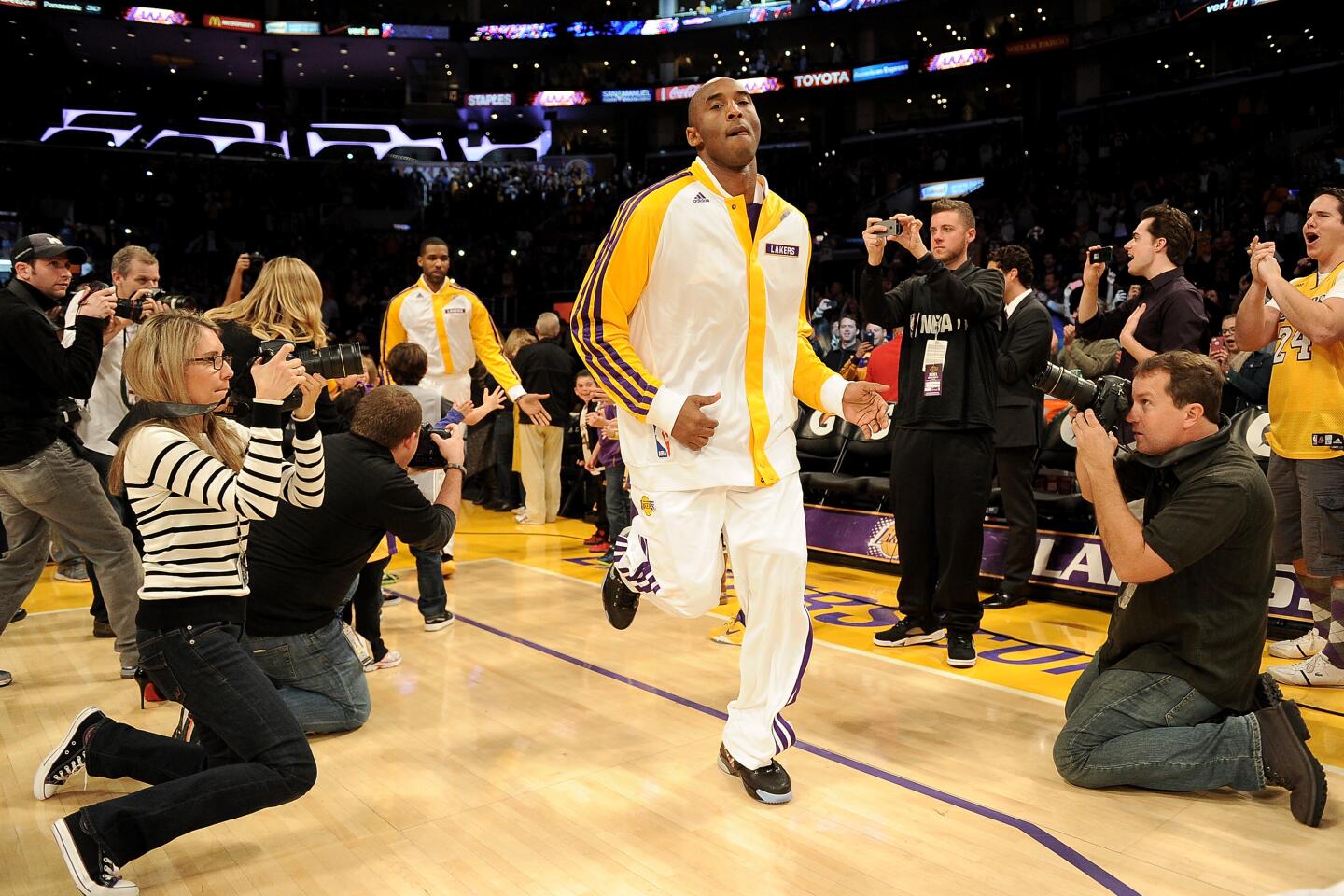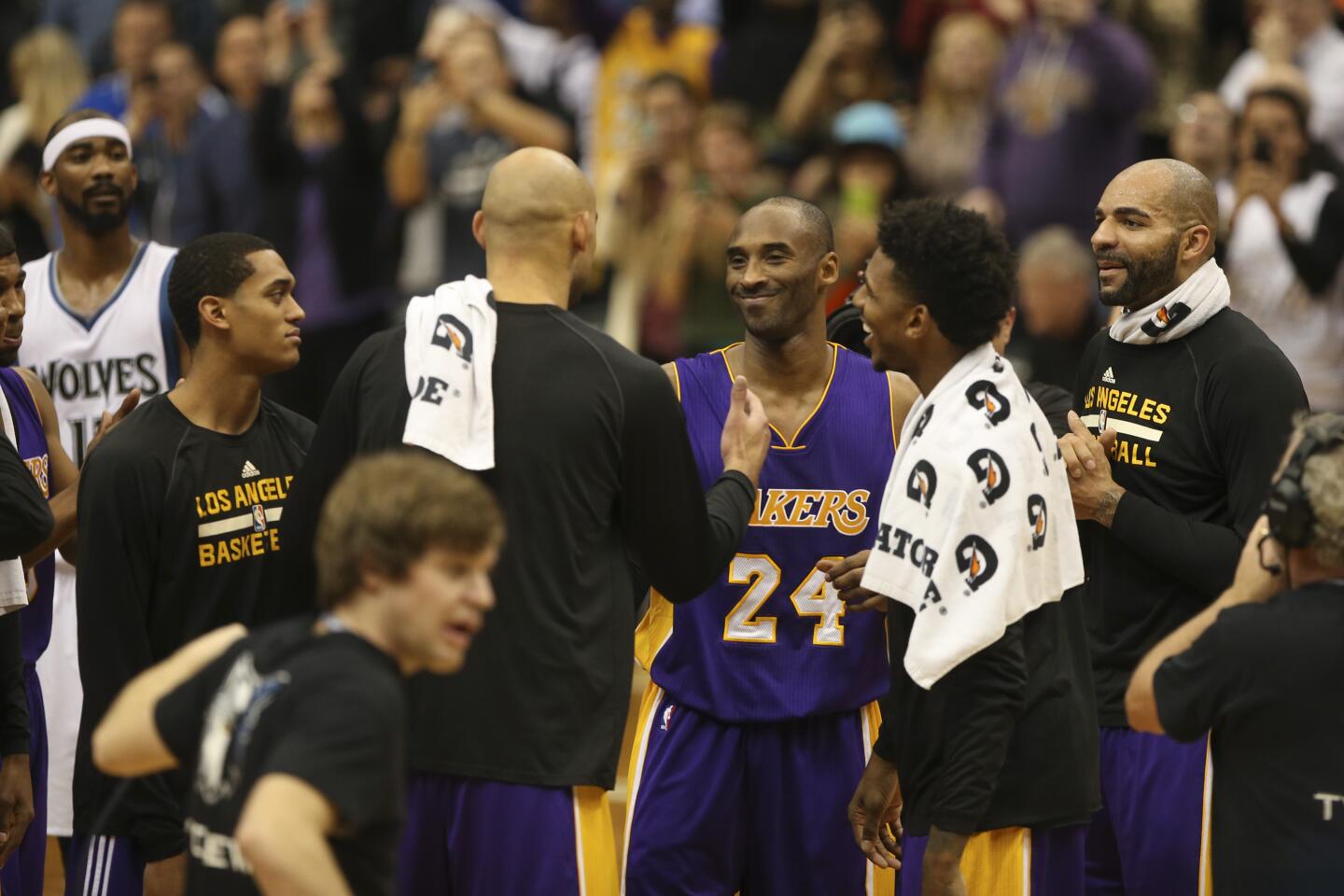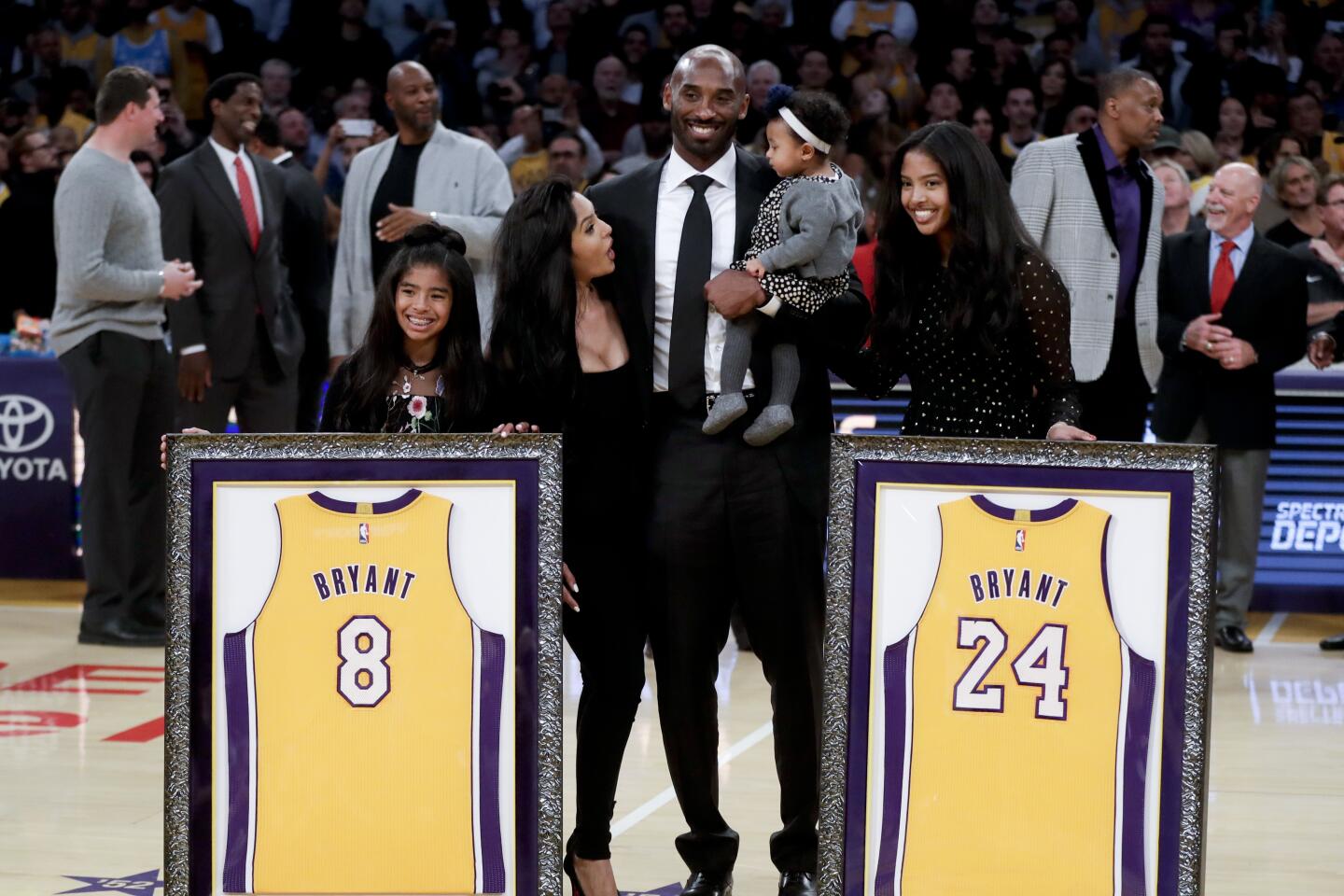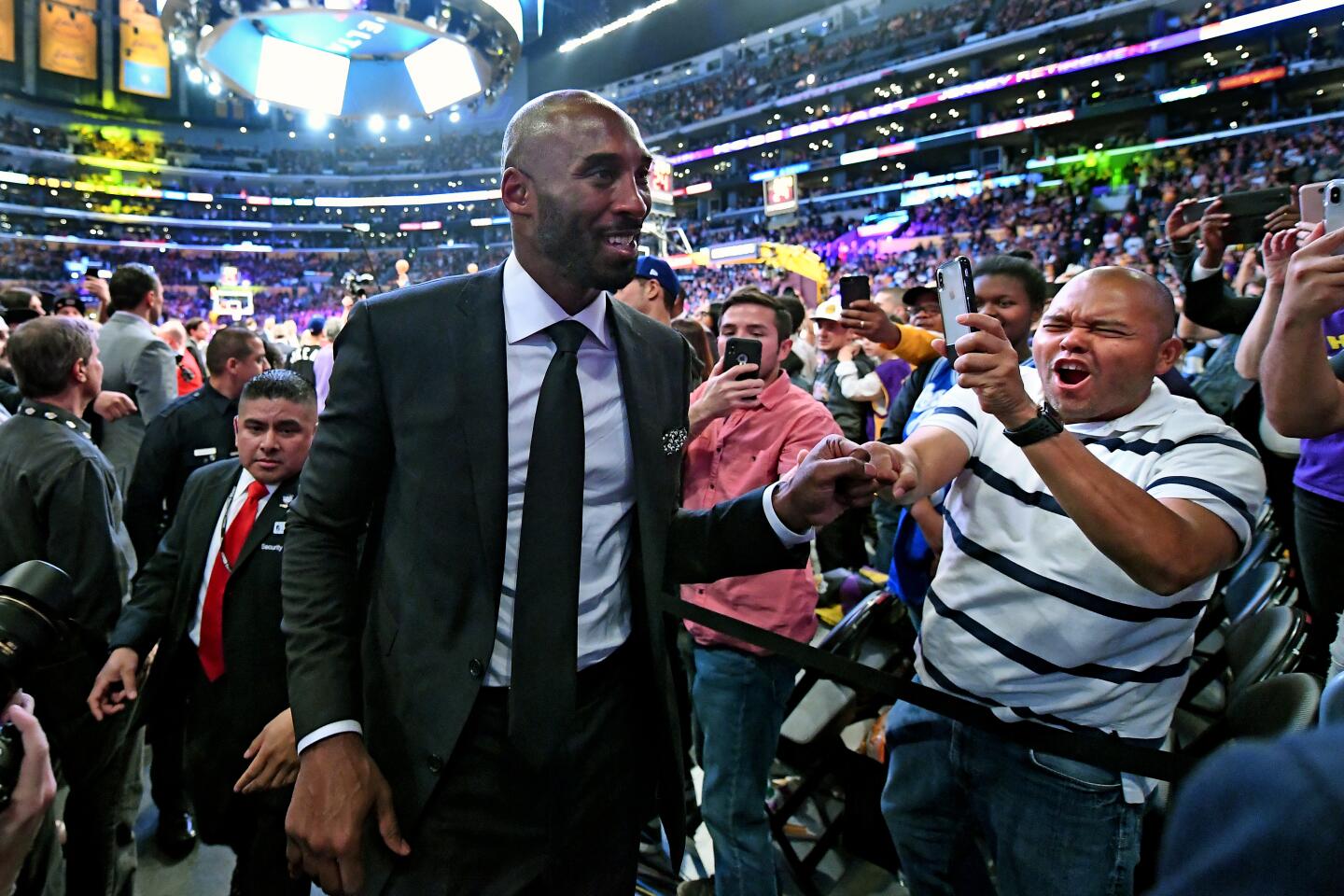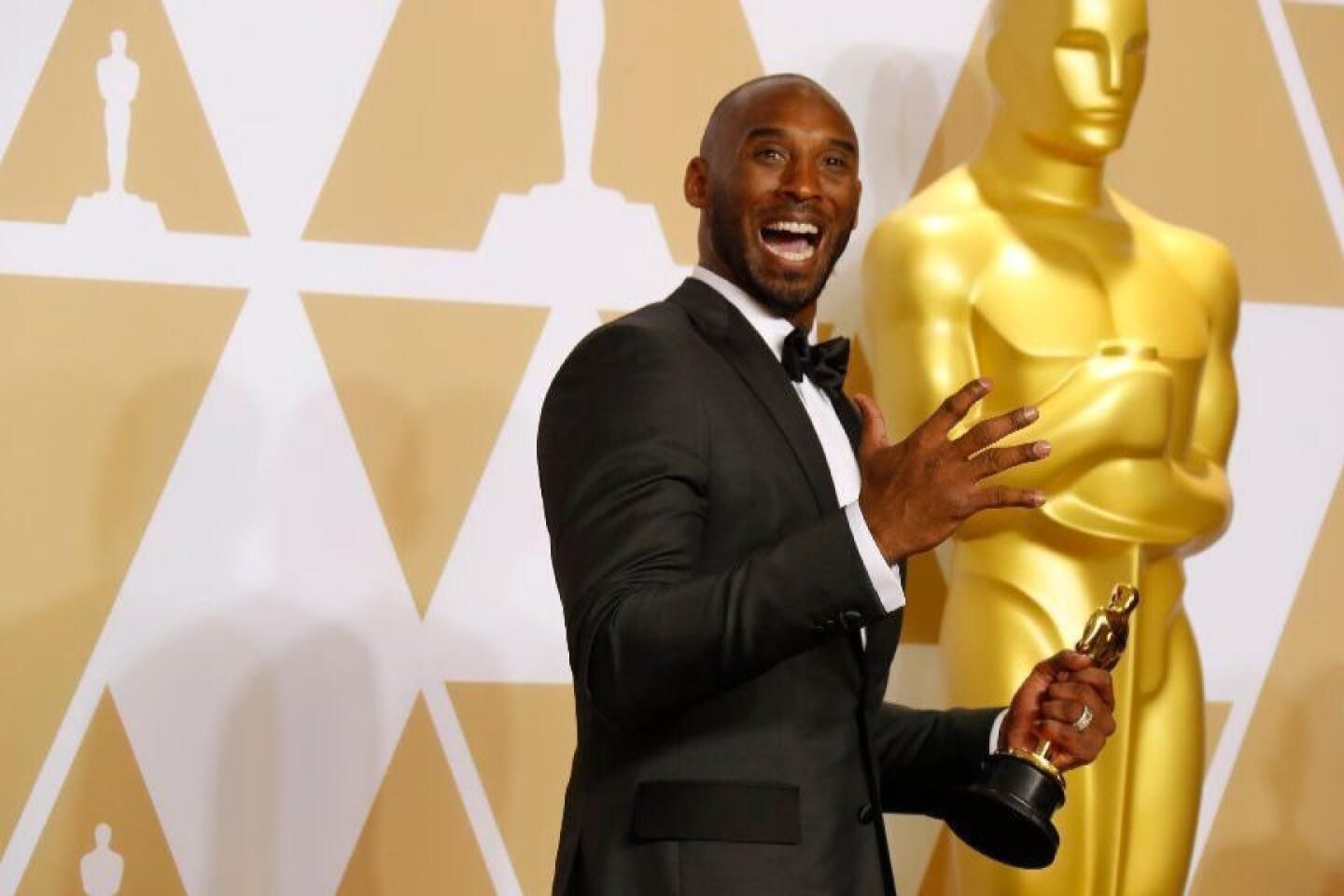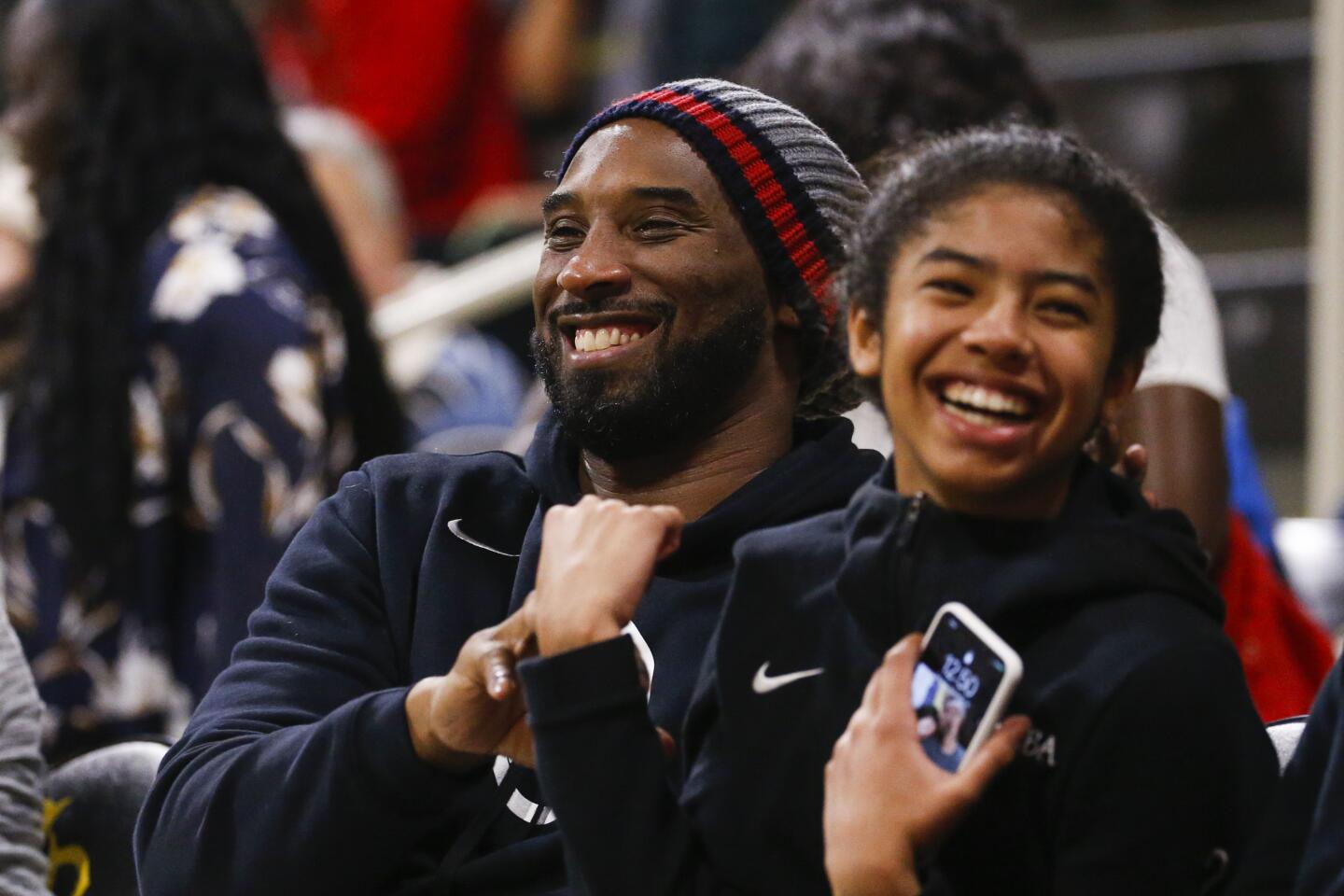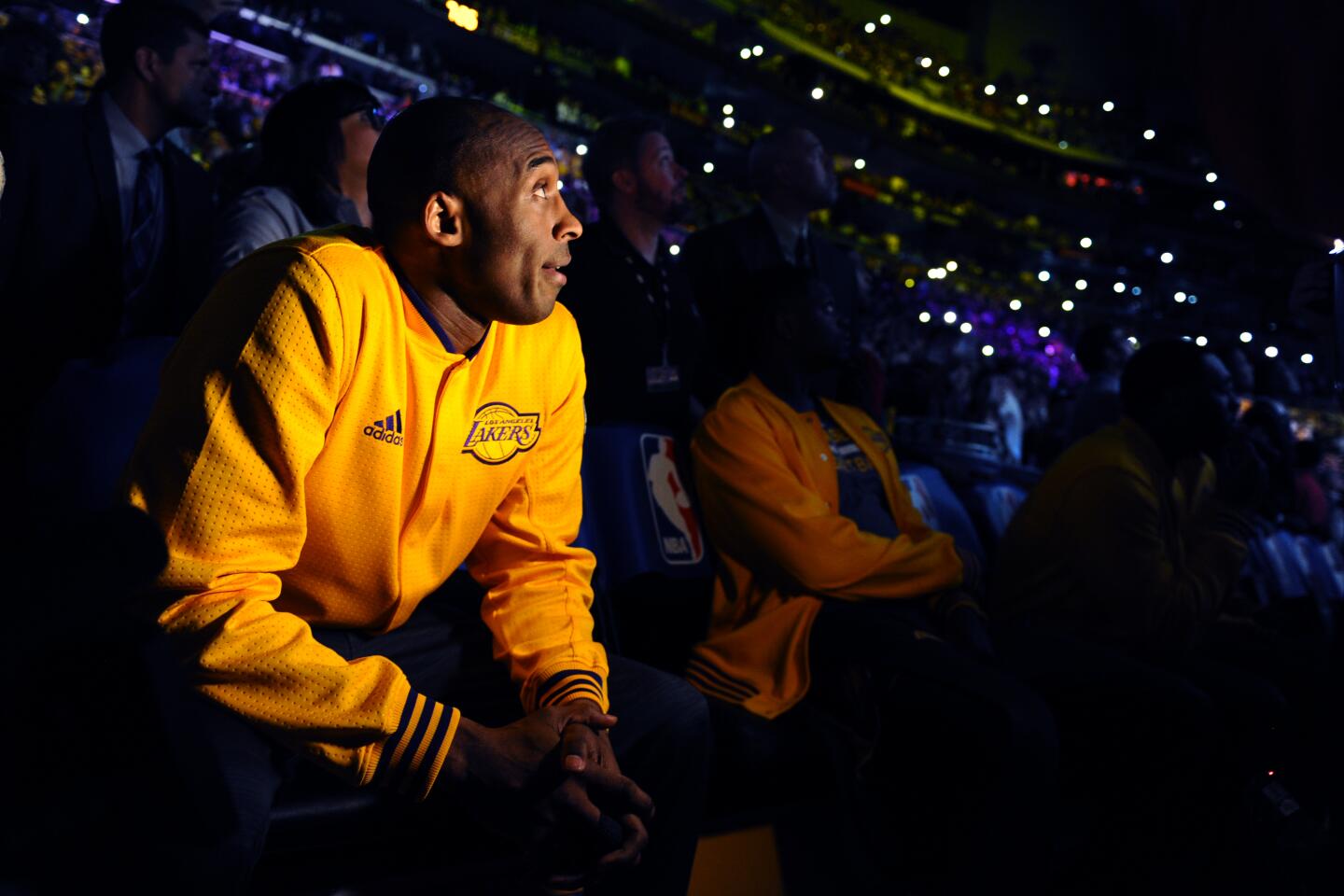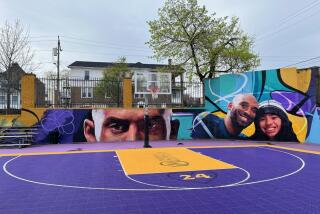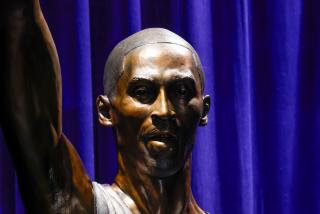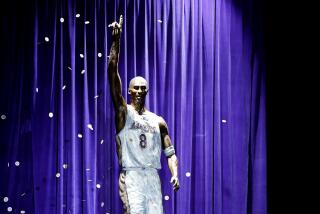Column: Reminders of Kobe Bryant’s life and spirit remain vivid a year after his death
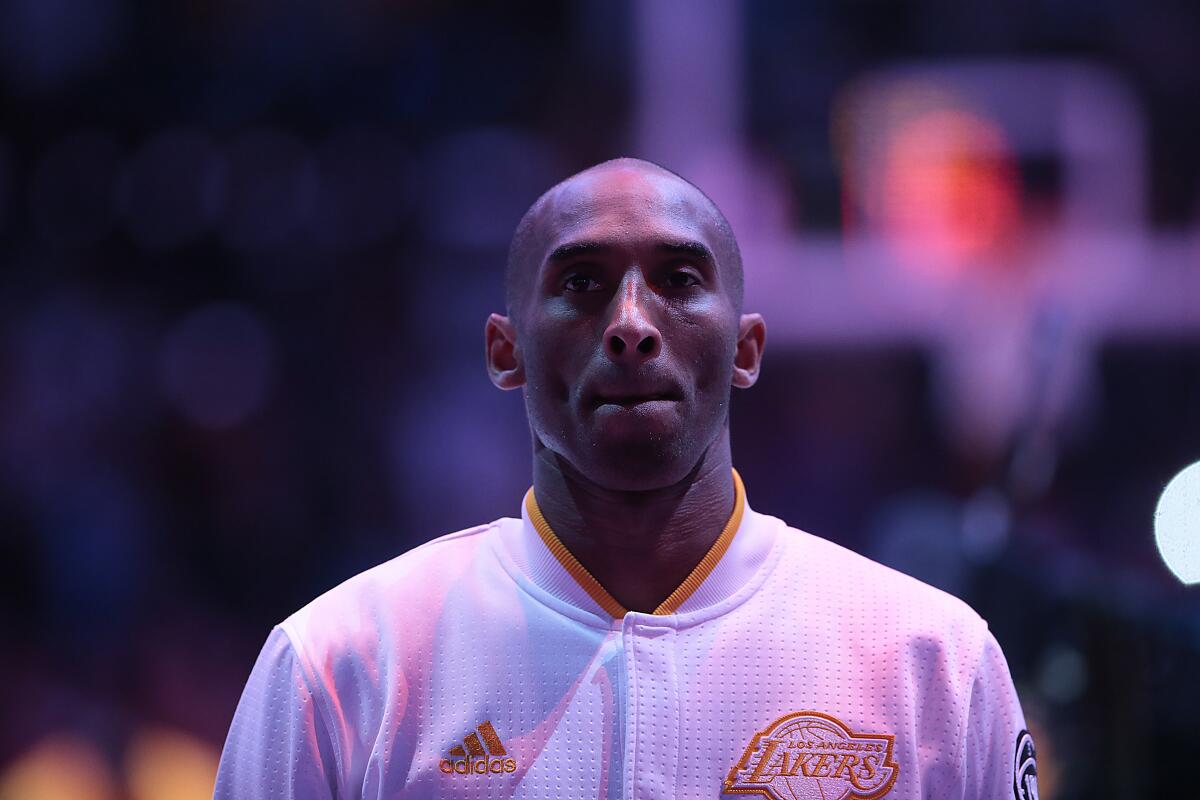
- Share via
It’s been a year now, and Kobe Bryant still comes to me in my dreams.
I was once walking down a curving path and there he was, standing on the side of the road, motioning me forward.
In another dream, I was sitting at press row watching some serious sporting event when I felt his presence beside me, laughing, nudging me, trying to make me laugh.
I know how crazy this must sound. I understand how contrived this must feel. When I first began having these dreams last spring, I embarrassedly shared them with a colleague. He urged me to write about it, but I declined, saying nobody would believe me. At the time, I didn’t even know whether I believed me.
I’m reluctantly sharing them now because, on this first anniversary of Kobe Bryant’s death, enough has happened to convince me they’re real.
It’s been a year now, and I still can’t shake him.
A collection of texts, radio communications, quotes and scenes from the last hours of Kobe Bryant’s life before the fatal helicopter crash in Calabasas.
The long and hard dozen months since the Jan. 26, 2020, death of Kobe and daughter Gianna and seven others in a helicopter crash has revealed a very startling yet unsurprising thing about the fallen star.
He’s still here. He still lives among us. He’s in our daily struggles. He’s in our personal triumphs. He’s in our last-second defensive stops or buzzer-beating shots or wherever we require that Mamba Mentality. Even amid a pandemic in which nobody is supposed to be anywhere, Kobe is everywhere.
His last name is printed on jerseys that have become the city’s unofficial uniform. His first name is in chants that suddenly break out among socially distanced friends. His face is on city murals that have become drive-by tourist attractions. Is it any wonder he would show up in the middle of our sleep?
For many, his spirit floats through this town like our cool evening breeze, coming alive as darkness approaches to inspire, comfort and connect.
For others, that spirit is a nasty Santa Ana wind, enraging with memories of the rape charges, the youthful selfishness, the childish petulance.

But for all his failings, by the time of his death at age 41, Kobe Bryant had evolved into a loving husband, devoted father, powerful mentor, community leader and grateful superstar.
That is how he left us. That is what lives in us.
He came to Los Angeles as a kid, departed it as a man, and for those 24 years, we witnessed every painful and precocious bit of his growth. Right before our eyes. Directly into our living rooms. With equal parts shock and awe. We gasped at the mistakes and swooned at the dramatics and reveled in the journey.
It is the remarkable finished product of that terribly unfinished life that remains with us still.
He lived on the cover of tabloids, yet his legacy is that he died ferrying his 13-year-old daughter to basketball practice. He was first known as a cocky teen who acted as if he invented basketball, yet the final accolade of his life was an Oscar for an animated short based on a letter of gratitude to basketball.
Do you remember how you heard the news? A late Sunday morning in L.A.? Of course you remember. You’ll always remember.
He was considered the ultimate ball hog, yet in his last words to me he deftly made a powerful assist. In a phone interview nine days before his death, he gladly passed his Lakers torch to LeBron James, anointing him as his successor even as James was on the verge of surpassing him for third place on the NBA’s all-time scoring list.
I distinctly remember attempting to stir the pot, asking Kobe whether he thought James was cutting into his popularity and what would be the reaction on Twitter and …
“Just stop,” he said.
He explained, “When LeBron came to Los Angeles, he is now a Laker, he is part of our brotherhood, part of our fraternity, and we should embrace him that way.”
While that quote was still fresh, and less than 24 hours after James made a driving layup to pass him on that scoring list, Kobe was gone.

Do you remember how you heard the news? A late Sunday morning in L.A.? Of course, you remember. You’ll always remember.
I can still see the blinding fog that enveloped my San Gabriel Valley neighborhood as I rode to the airport early that morning for a flight to Miami for the Super Bowl. I didn’t think much about the thick mist at the time, but now I’ll never forget it.
A couple of hours after my flight landed, as I lay in my hotel room bed still groggy from a nap, I received a call from a frantic assistant sports editor Athan Atsales. I can still hear that voice. I will forever feel those words.
“[Expletive!]” he shouted. “Kobe’s dead!”
As I’ve said before, I spent the next several hours weeping on my keyboard as I banged out the most difficult column of my career. Like much of Los Angeles, I was crying not only for the tragic death of a friend, his teenage daughter and seven others. I was also mourning the loss of this civic touchstone who had been part of my life for nearly half of my life.
When Kobe Bryant died, a chunk of my past and future died with him. Judging from the weeks of ensuing citywide grief, the outpouring filling L.A. Live with flowered memorials and weeping old men, I’m sure I’m not alone.
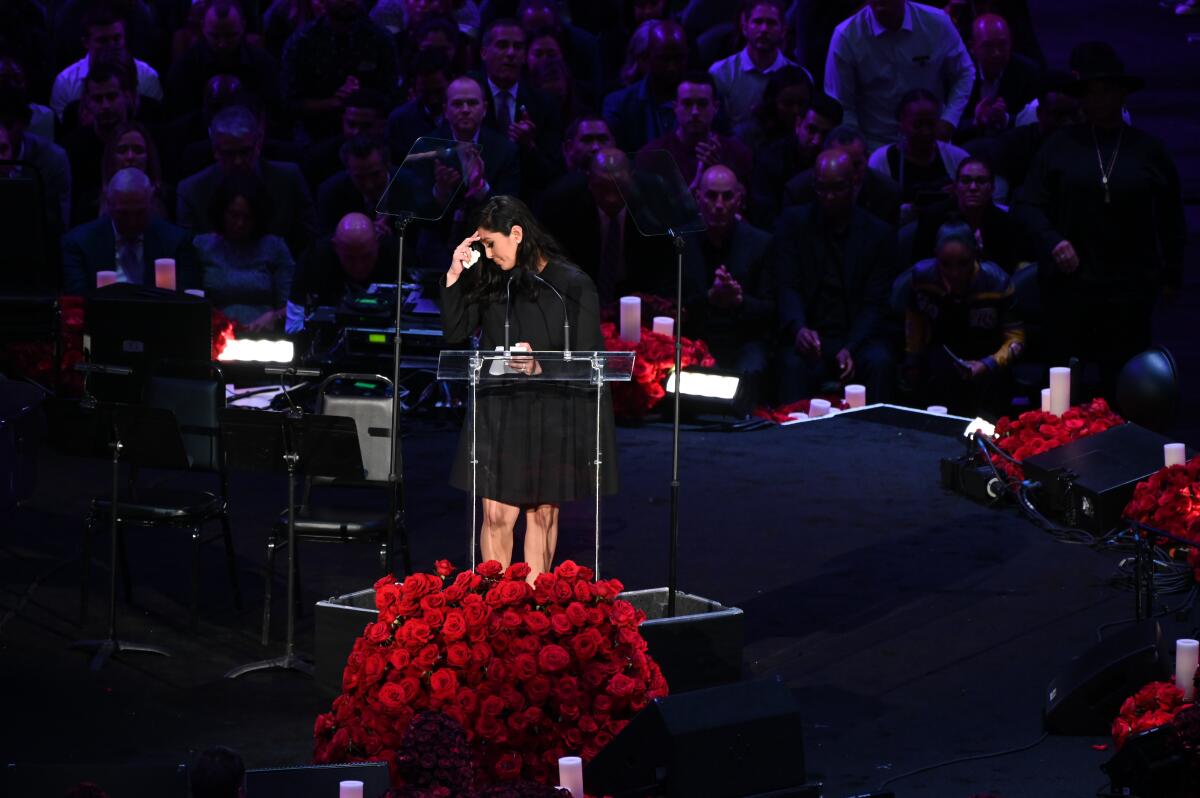
At a packed Staples Center memorial service highlighted by courageous words from widow Vanessa Bryant, the surprise speaker was Michael Jordan. In recounting their secretly close friendship, Jordan openly cried, his tears matching those of the longtime fans in the upper deck. In the end, Kobe seemingly touched a little bit of everyone.
Since his death, I haven’t been able to watch any of his highlight videos, the ones with the dunks and the buzzer-beaters and the jersey-gnawing growls. In every frame, he is so vibrant, so alive, the unfairness of his ultimate final score is still too painful to bear.
After some of those games, we would walk together through the Staples Center tunnel to his car, a short trip filled with his long diatribes about needing to be stronger, to be better, as if his more recent moment of stardom was never enough. Those were perhaps my favorite moments as a sports journalist. To never be able to relive those conversations in any setting is still staggering.
Shortly after the tragedy, an artist gave me a beautiful framed portrait of Kobe and me together, but it still sits in a corner. I became a Times columnist during the same summer Kobe began playing for the Lakers. We sort of grew up in our professions together, and it just doesn’t seem right that one person in that photo is no longer here.
Kobe wasn’t supposed to go before me. In the turbulent year that followed his passing, I have made every effort to move away from the memories of someone who I still cannot believe is gone.
But yet, Kobe Bryant is everywhere.
Kobe Bryant, daughter Gianna and seven others perished in a helicopter crash on Jan. 26, 2020. Remembering the Lakers legend a year later.
He was not only in the Lakers’ souls during their NBA championship run — the “Mamba Shot,” the Mamba sideline chants, the Mamba uniforms, the snake in their championship rings — but he was also on the streets after the Lakers’ clinching victory. The celebrating fans chanted not for LeBron James or Anthony Davis, but for a memory.
“Ko-be, Ko-be, Ko-be,” they cried.
He was also in the Dodgers’ World Series championship run, Mookie Betts paying him tribute on both video and in social media before making several “Mamba moment” plays.
You could find him too in the strength of his beloved Sparks, who, on his Aug. 23 birthday, overcame a 10-point fourth-quarter deficit to defeat the Dallas Wings as Candace Parker scored 22 points while wearing his name on her shoes.
“I hope we honor him in action,” Parker said afterward.
And so, a year after the tragedy, we continue to do so, every time we fight through adversity and will ourselves to a victory, no matter how small or trivial our battles might seem. Far from a deity, Kobe was a flawed human being, but his growth beyond his failings and his maturation into a kind and decent man are worth our consideration as we examine our own path.
Kobe concluded our final interview with an unsolicited ode to his adopted hometown. I didn’t ask for it. I was taken aback when I heard it. It was almost as if he knew he would never get a chance to speak to Los Angeles again.
“It’s been crazy, [watching] this city grow and growing with it. I remember when L.A. Live was just a parking lot,” he told. “I feel such an appreciation, I can never pay the city back for what it’s given me.”
A year after his death, his spirit continues to settle that debt.
Kobe Bryant has left us. Mamba never will.
More to Read
All things Lakers, all the time.
Get all the Lakers news you need in Dan Woike's weekly newsletter.
You may occasionally receive promotional content from the Los Angeles Times.

